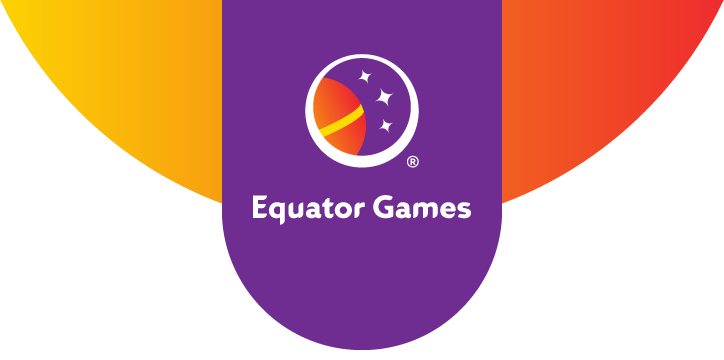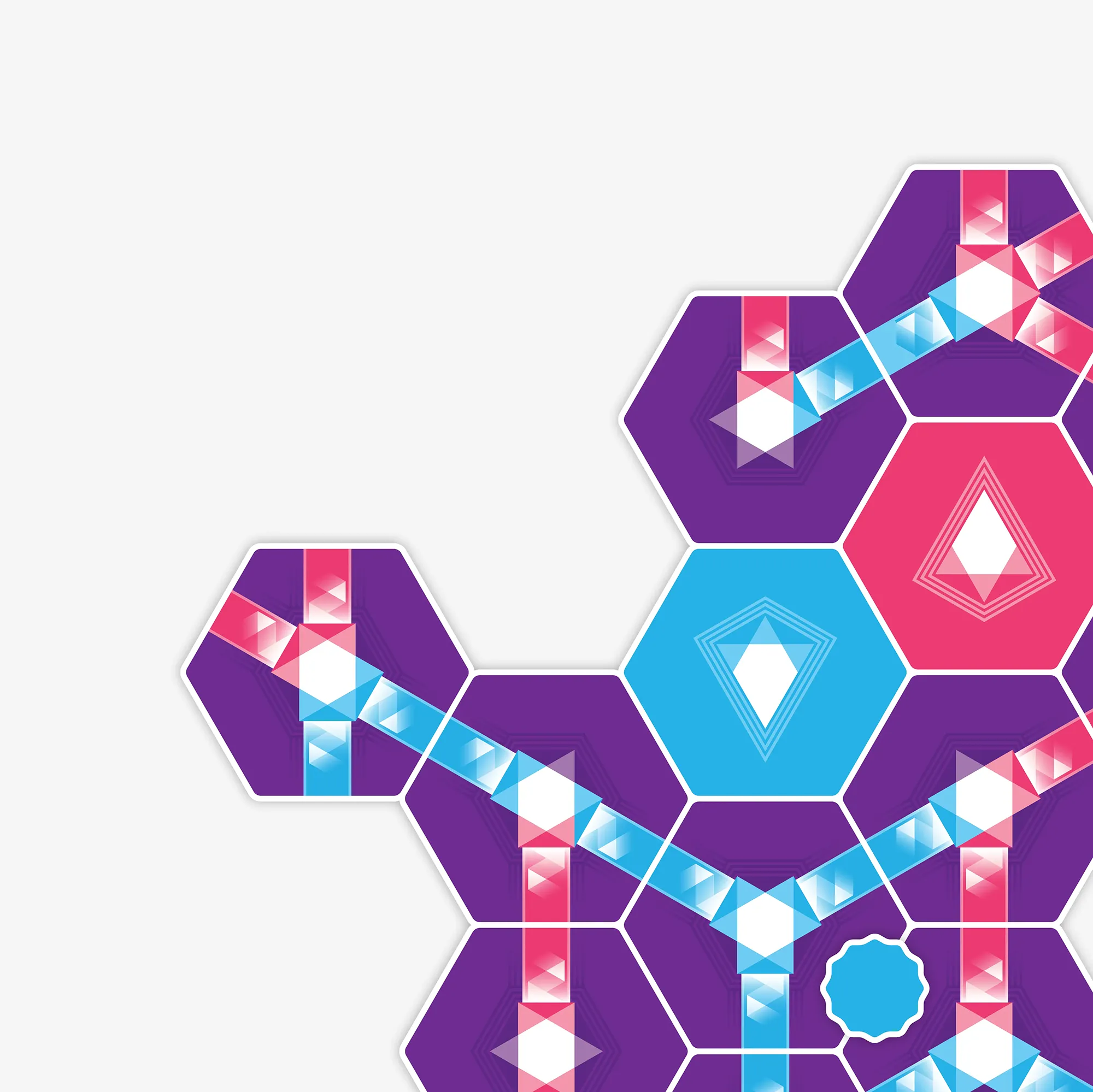Prisma Rulebook
- Last updated on May 2, 2025
Table of Contents
- How to use this guide
- Goal of the game
- 1. Components
- 2. Setup
- 3. Gameplay
- 4. Placing tiles
- 5. Making loops
- 6. Linking paths
- 7. Relocating tiles
- 8. Creating patterns
- 9. Breaking paths, patterns and loops
- 10. Scoring
How to use this guide
The complete rules of Prisma are written below, and are divided into numbered sections. Within each section you will find a collection of diagrams that help to illustrate the relevant concepts. Tap on a diagram to enlarge it. You can navigate between the enlarged diagrams by clicking on the left and right arrow buttons (on a computer or tablet with a physical keyboard) or by swiping left or right (on a mobile phone or tablet screen). The diagram captions also provide helpful details.
If you have any questions that are not answered here, or if you would like to share any comments about how we can improve this guide, please use the form at the bottom of the page. We will reply as quickly as possible!
Looking for the game?
Goal of the game
Prisma is an abstract game of strategy in which players guide and deflect beams of red and blue light. You will succeed by skilfully making loops, forming patterns, and rearranging tiles to maximize your position on the table. Your goal is to earn the most points or be the fastest player to place all of your scoring loop markers.
1. Components
- 3 direction markers
- 56 light tiles
- 18 loop markers
- Rules booklet
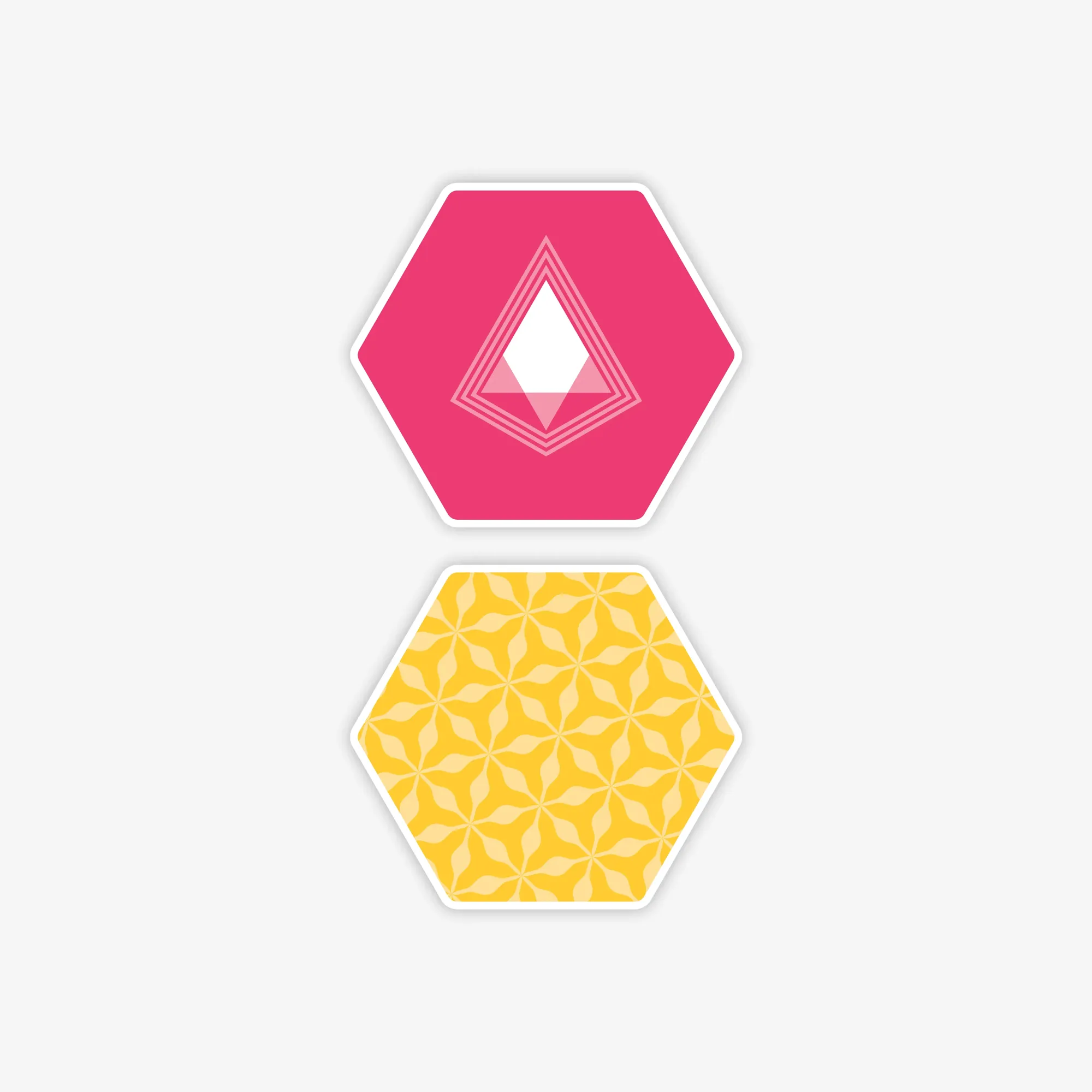

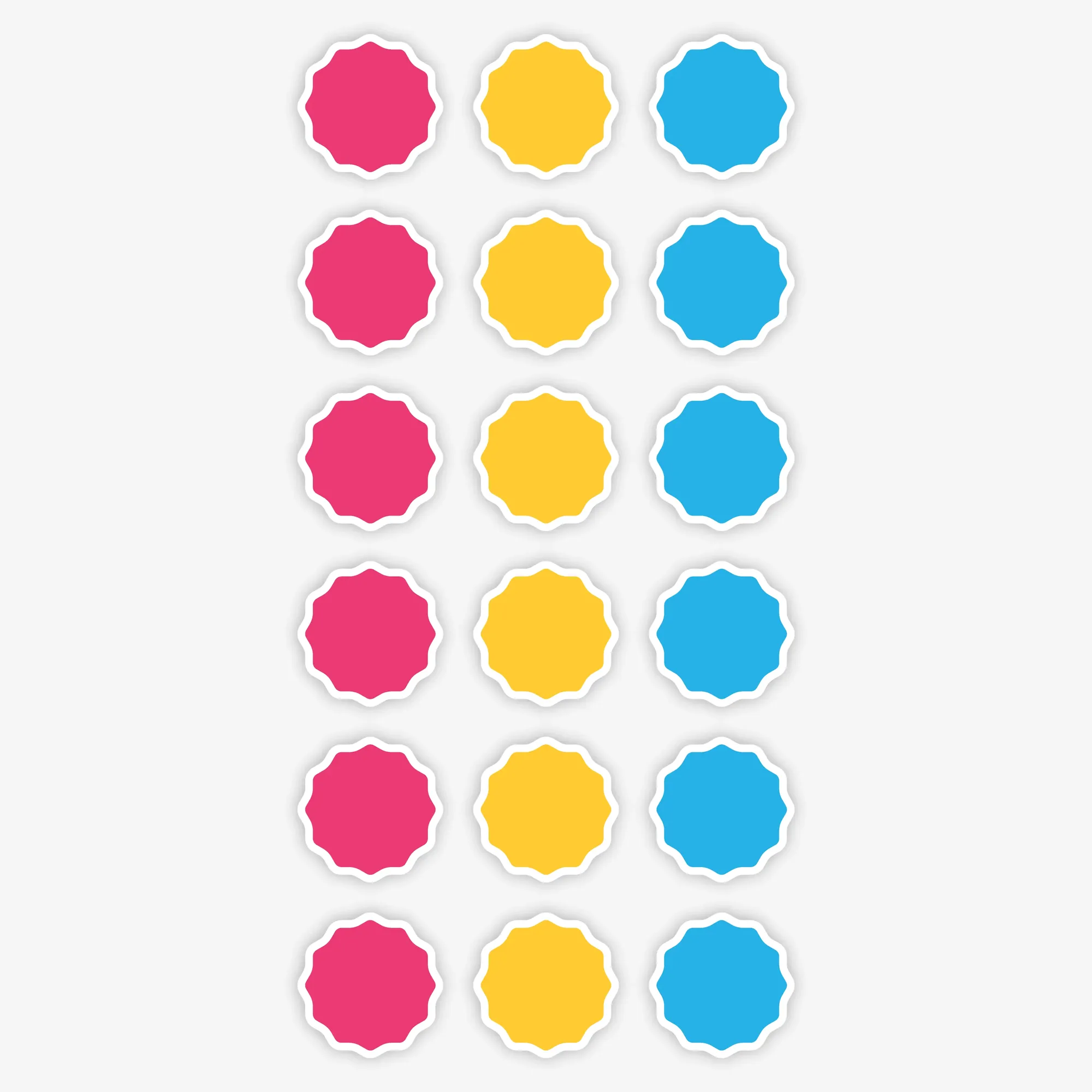

2. Setup
- Players determine who takes the first turn in either of two ways:
- Beam count: Shuffle the tiles face down. Each player randomly picks three tiles and turns them over. The player whose tiles collectively contain the most light beams plays first. In case of a tie, the tying players draw three new tiles and count their light beams, repeating this until there is no longer a tie. Return all of the picked tiles to the pile.
- Color check: Alternatively, the person who is most colorfully dressed plays first. Whichever method is used, the first player may have their choice of direction marker color.
- Shuffle all of the light tiles face down. For two players, draw two stacks of 20 tiles. For three players, draw three stacks of 15 tiles. Give a stack to each player and return all remaining tiles to the box.
- Starting with the first player and moving in a clockwise direction, each player places their direction marker in the center of the table and points it toward themselves. Direction markers must touch at least one other direction marker along its sides. Because multiple placement options are possible, players must agree on the layout of the direction markers.
- Each player draws their first light tiles from their stack and flips them over. For two players, draw four tiles. For three players, draw three tiles. These tiles make up a player’s opening hand.

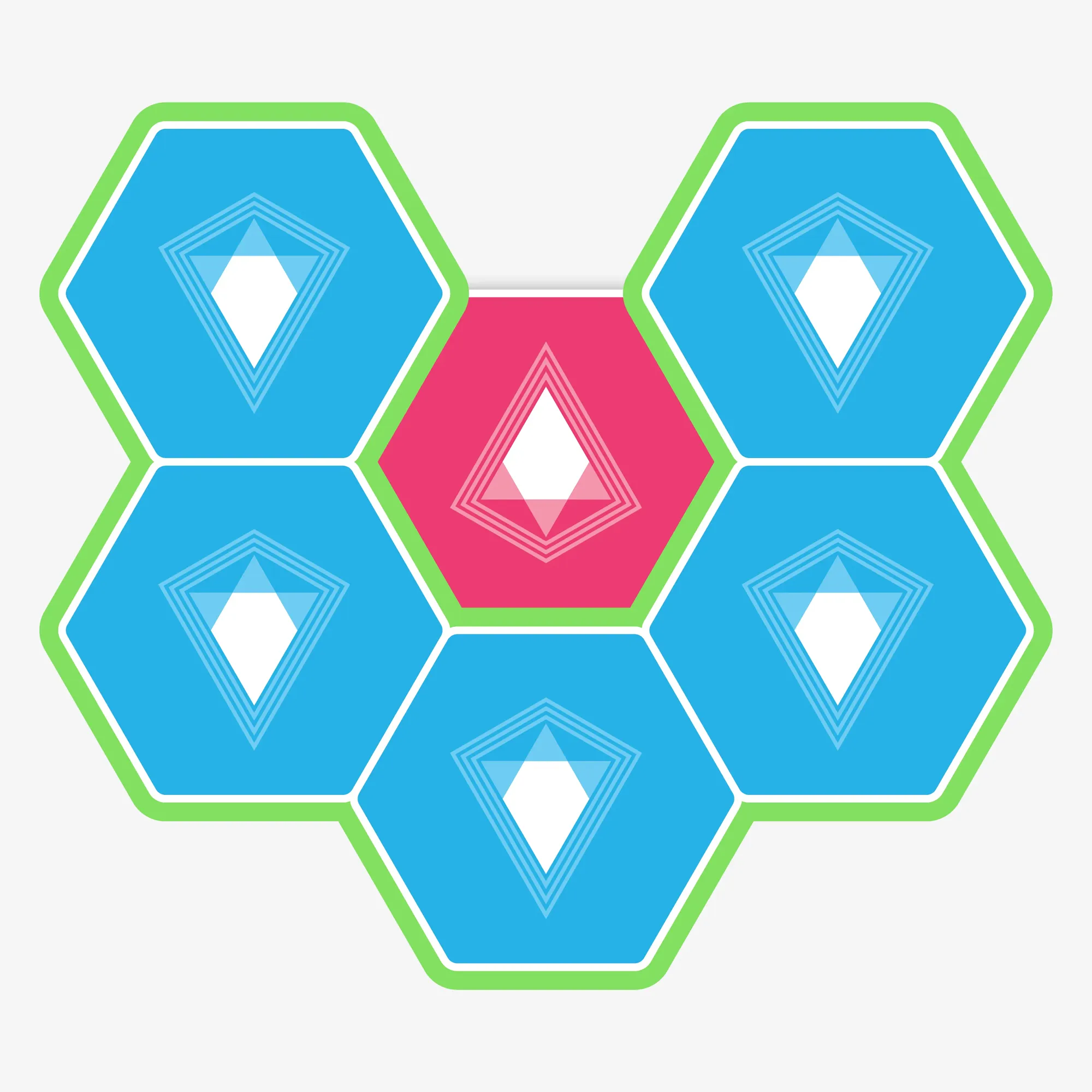
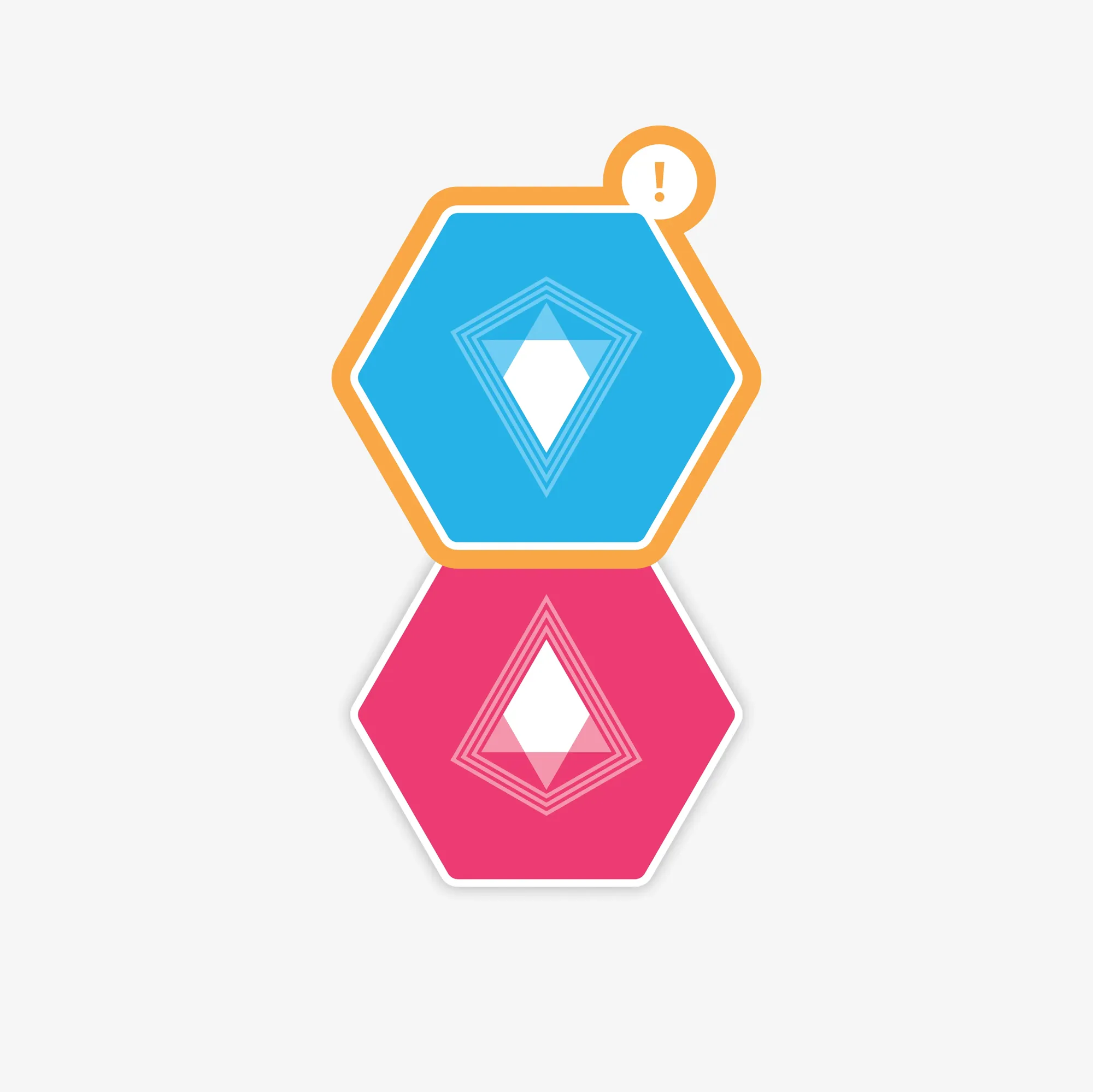
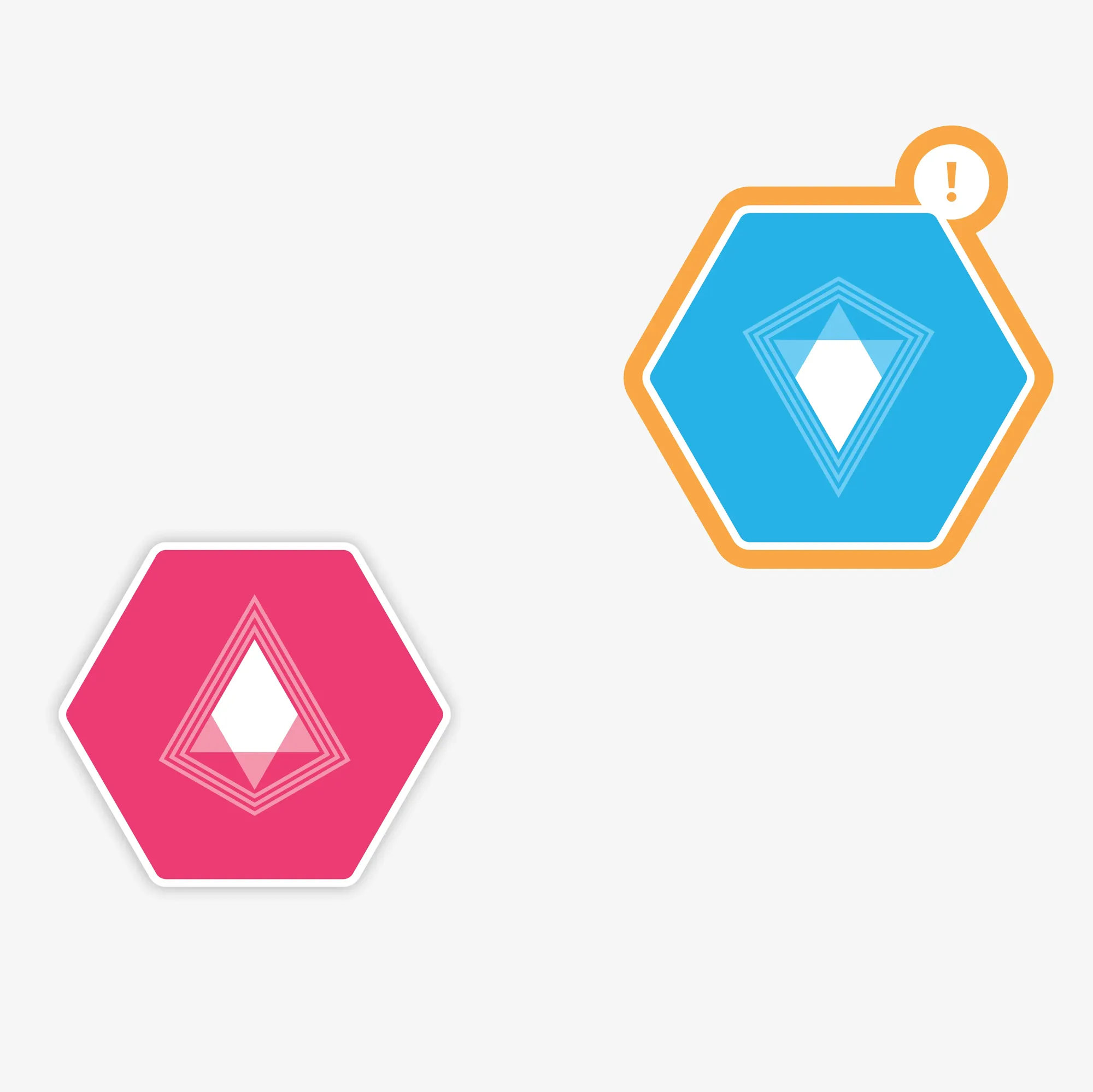
3. Gameplay
Prisma is divided into the opening, middle and closing turns. Also, there are two ways in which a game can come to an end.
3.1 Opening turns
The first player places a single light tile from their hand. This first tile must touch at least one direction marker along its sides. The next player places a single tile, which must touch at least one direction marker or light tile along its sides. Tiles placed during the opening turns do not need to have their light beams connect to any other tile, although this is allowed.
Players take turns placing their light tiles one at a time until the last player has placed the final tile in their opening hand.
3.2 Middle turns
Players start the middle turns by drawing four light tiles into their hand.
Each player places a total of two tiles from their hand during each turn for the remainder of the game. Additionally, players may have the opportunity to carry out the following actions: make one or more loops; link paths; relocate one or more tiles; and/or create patterns.
A player may carry out one or more actions before placing the second tile of their turn, which itself may be followed by one or more actions. The turn ends once the player has completed all available actions. The player then replenishes their hand by drawing two tiles from their stack.
3.3 Closing turns
The closing turns begin once the first player has drawn the last two tiles from their stack. Gameplay continues as before, with the one exception that no one may break any loops for the rest of the game.
3.4 Game end
The game ends either when the last player has finished their final turn, or as soon as a player places their sixth scoring loop marker.
4. Placing tiles
Light beams are colored red or blue. A light beam may only flow into another light beam of the same color, and not into the blank side of a tile or a direction marker.
Newly placed tiles must connect at least one of their light beams to an existing light path. This restriction does not apply to any tiles placed during the opening turns, tiles that have a single light beam or tiles that are being relocated.
All tiles must touch at least one other tile or a direction marker along their sides. No islands of tiles may be allowed to form that are separated from the central formation of tiles.
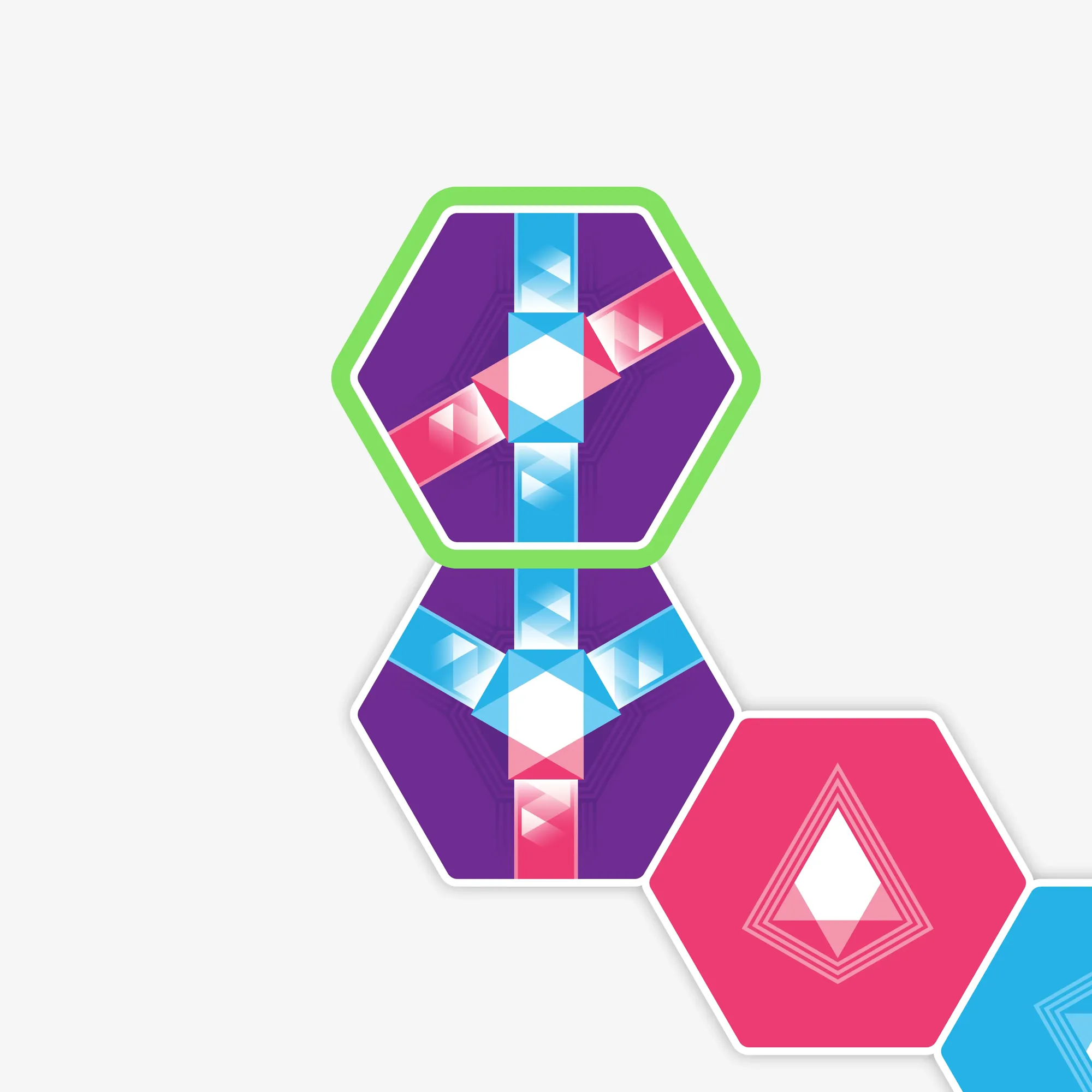
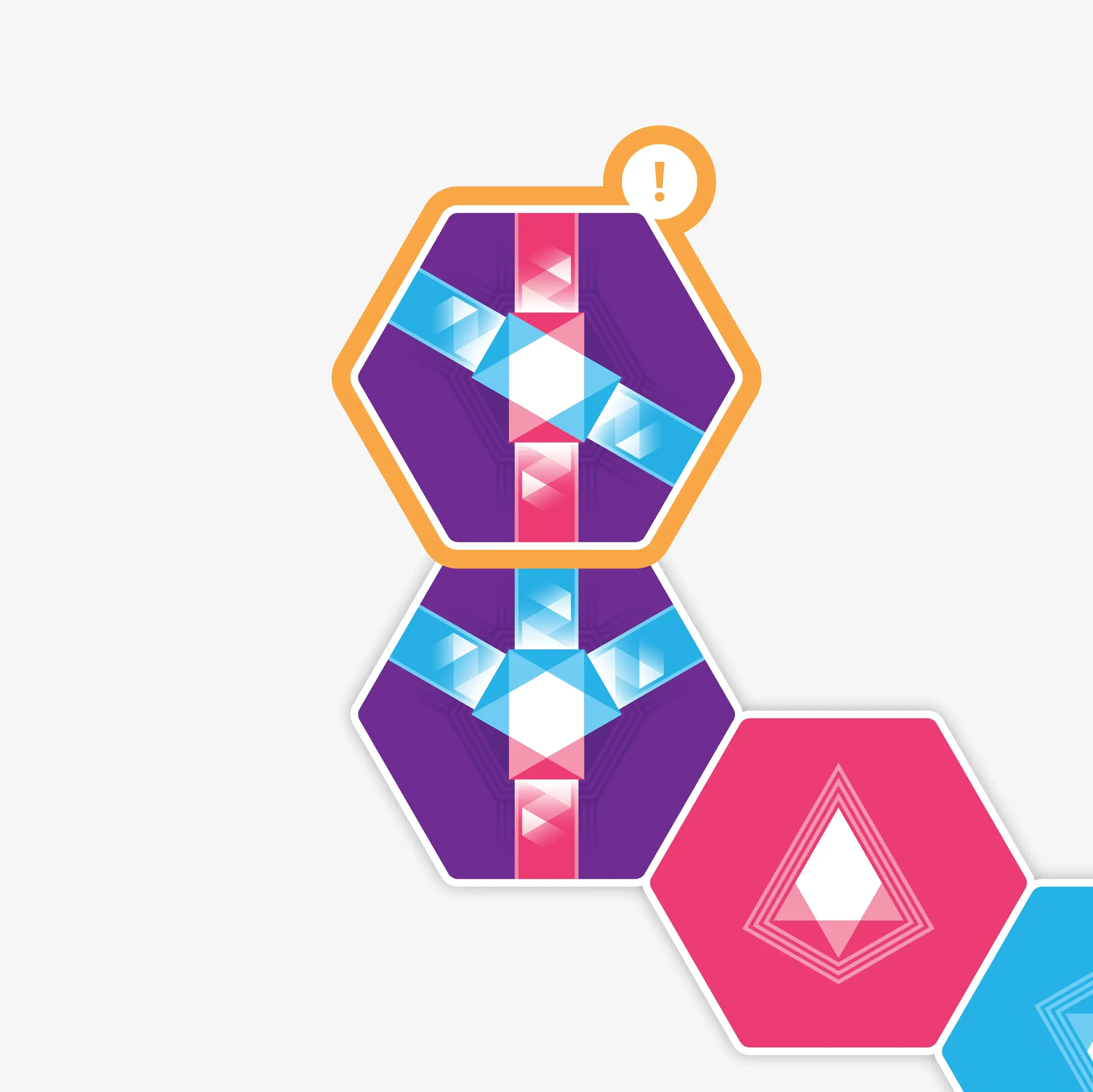
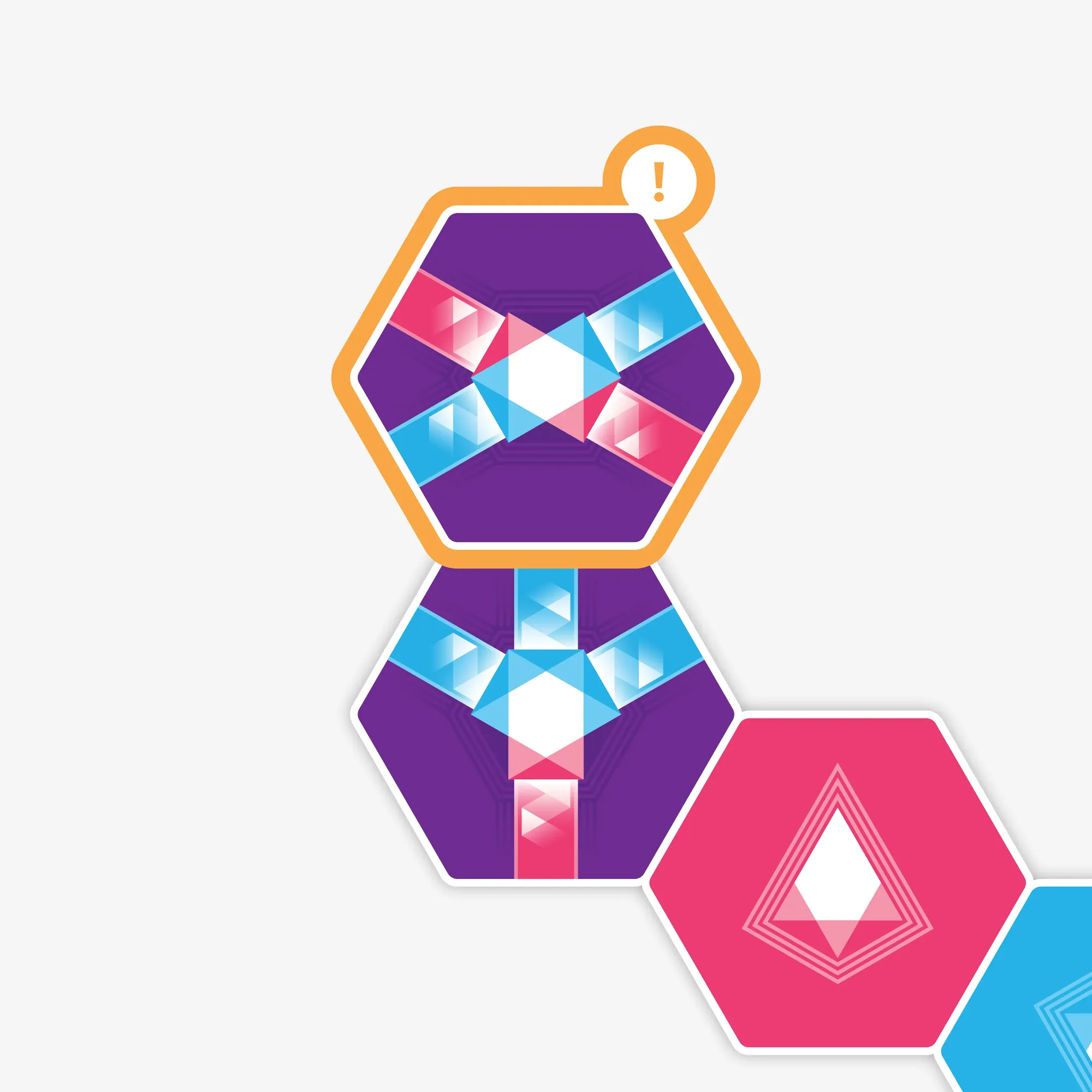
Multitasking tiles
At any given moment a single tile can be simultaneously involved in multiple formations, such as loops and patterns, and sometimes for more than one player.
5. Making loops
A loop is made when at least three tiles are placed next to one another in such a way that their light beams connect to create a closed path. A loop may of any size or shape. It is possible for empty spaces to remain inside of a loop.
When a player makes a loop they place a loop marker inside of it and earn the action to relocate a tile elsewhere on the board. If by placing a tile they form more than one loop, the player is only granted the action to relocate a single tile.
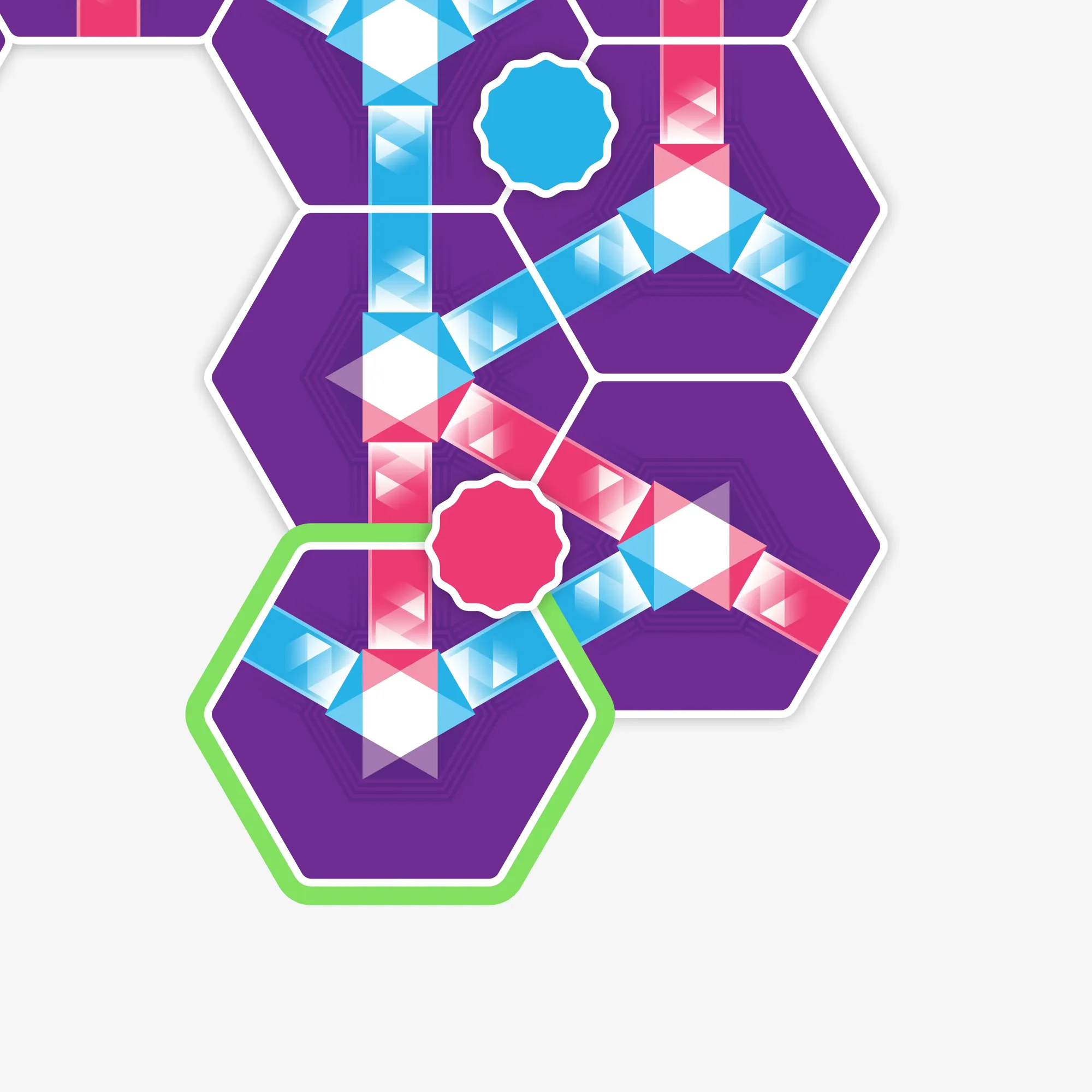
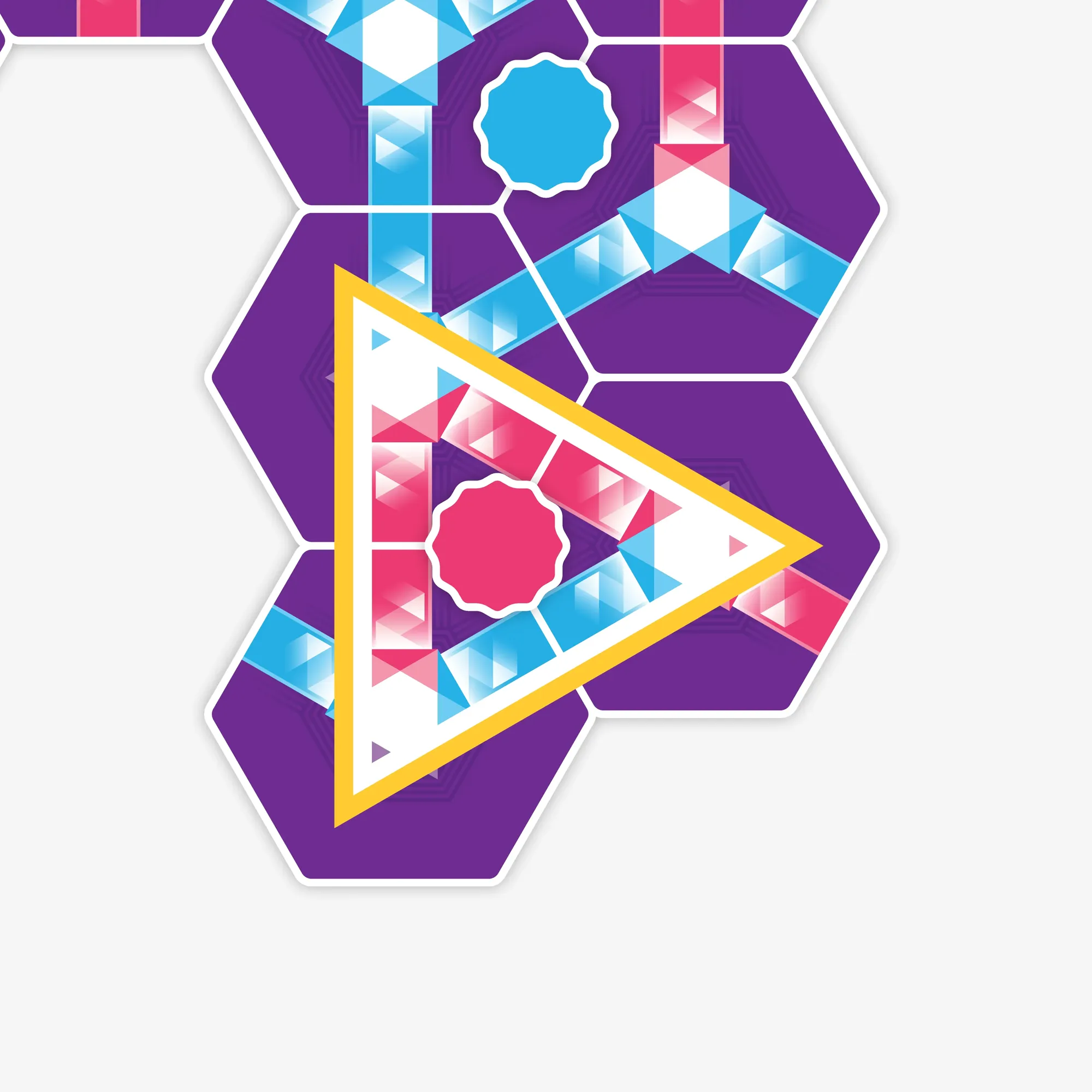
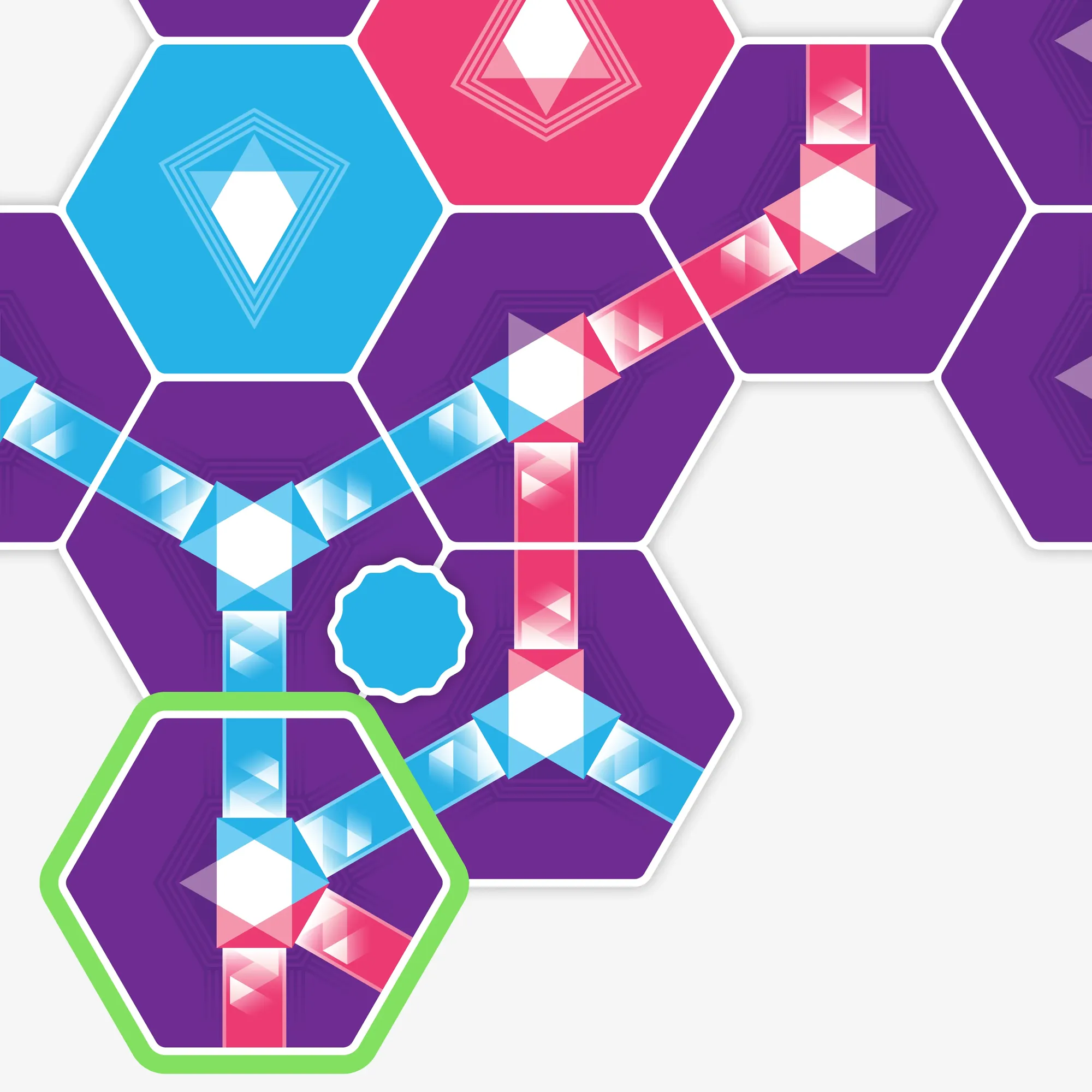
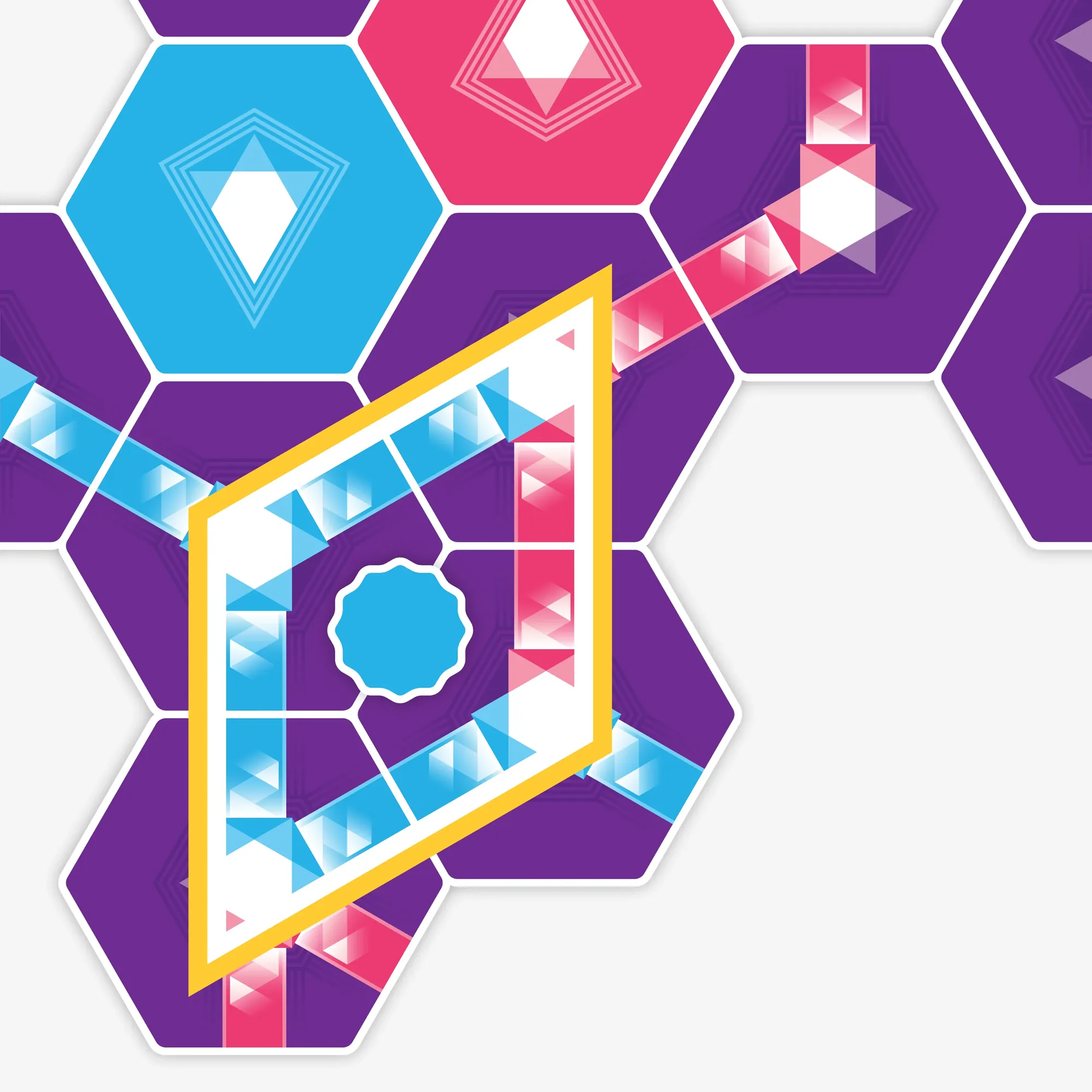
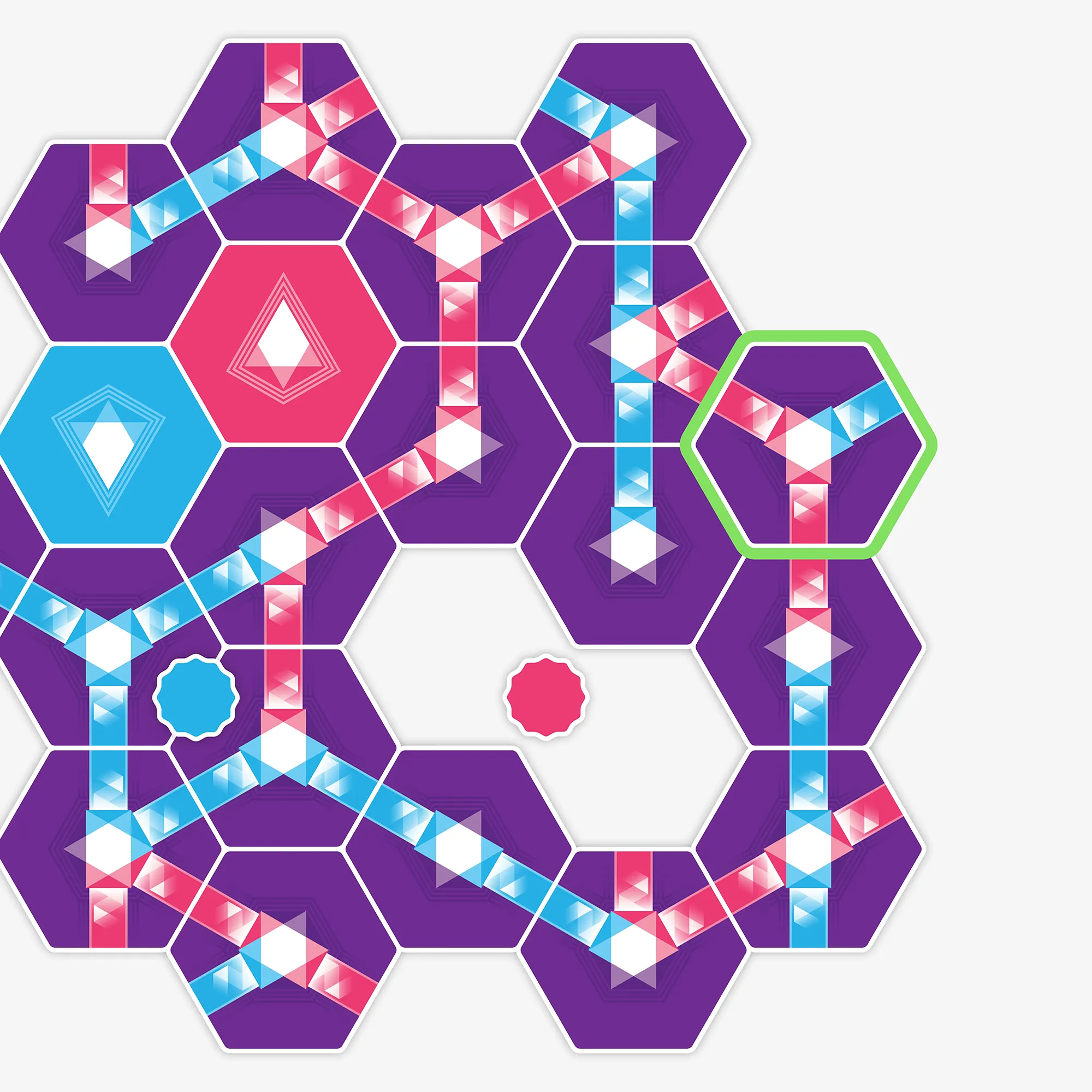
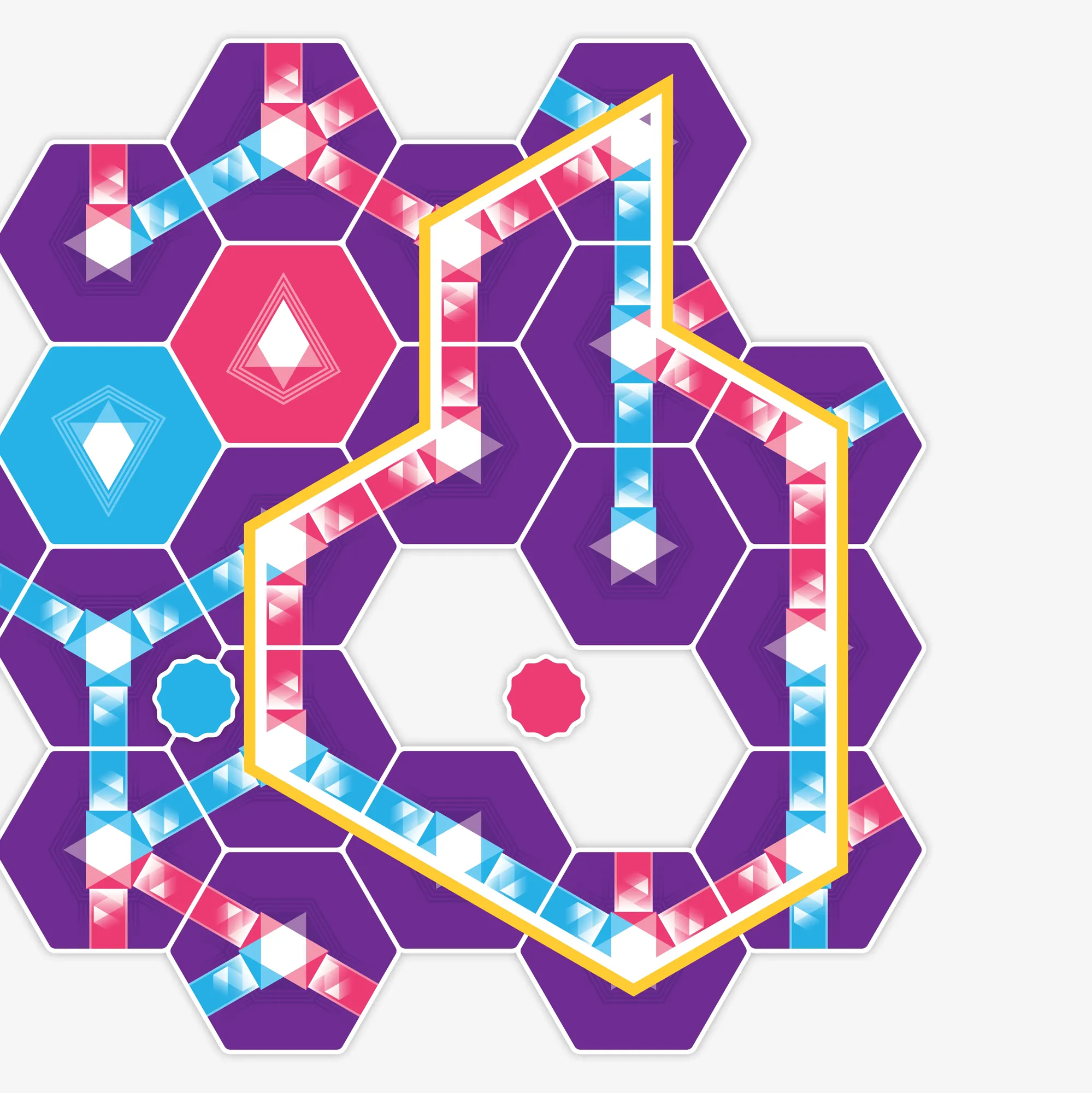
6. Linking paths
A light path consists of at least two tiles whose light beams connect.
When a player links two paths together they earn the action to relocate a tile elsewhere on the board. If by placing a tile they link more than two paths at the same time, the player may only relocate a single tile.
The relocation action earned for linking paths is more powerful than the relocation action earned for making a loop. If by placing a tile a player both makes a loop and links two paths, they may follow the relocation rules for the latter.
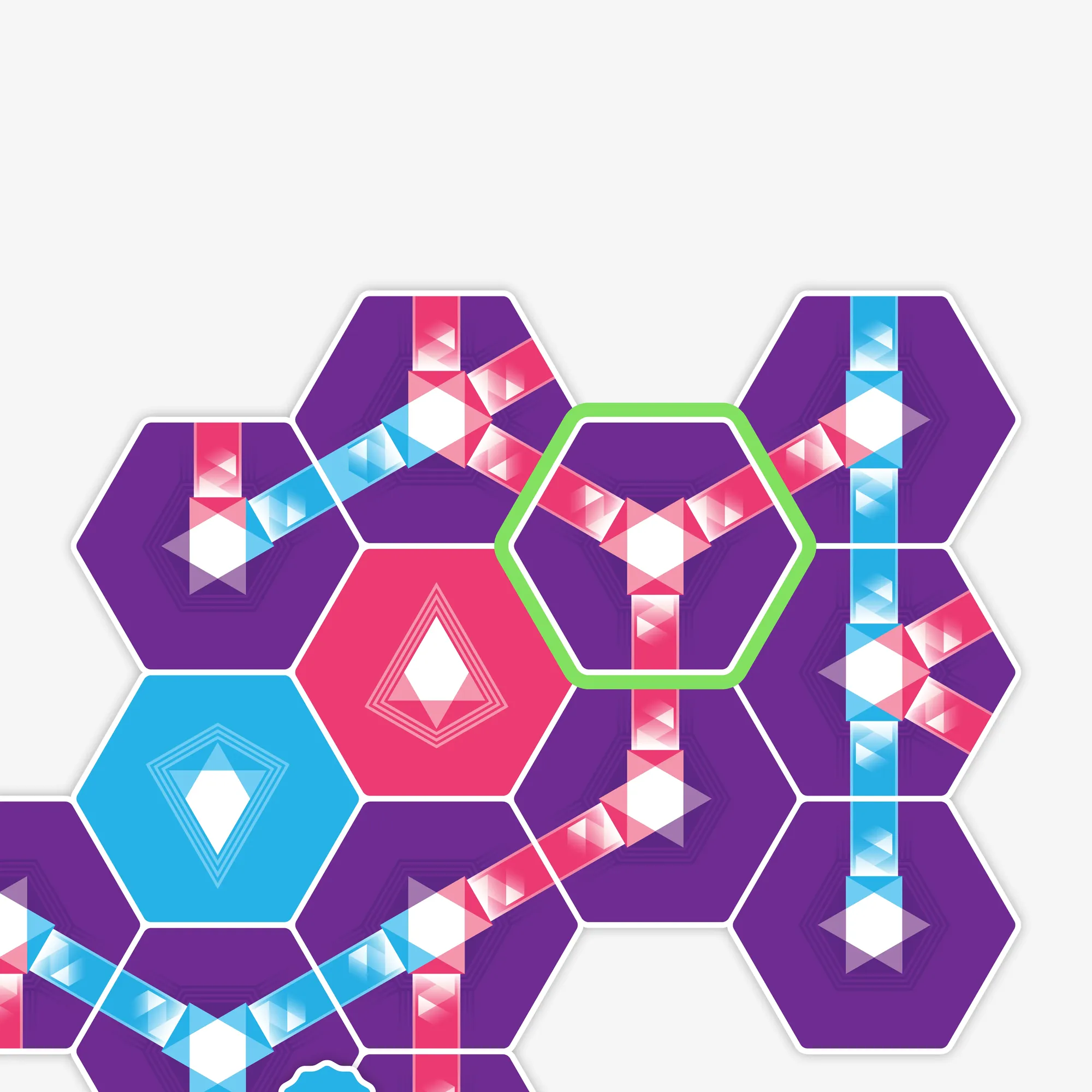
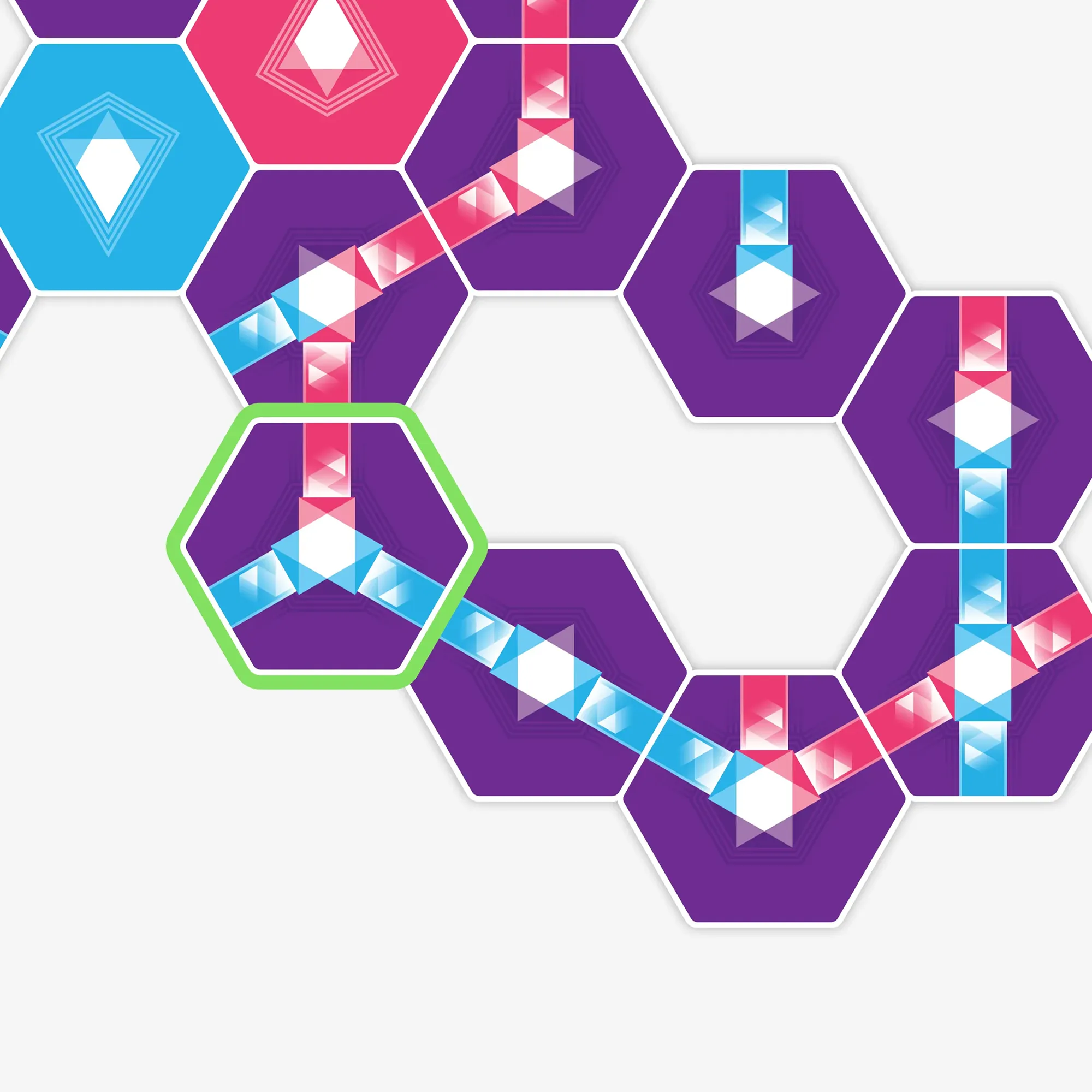

7. Relocating tiles
A player may relocate a tile of their choosing (with some restrictions) after they make a loop or link two paths.
The tile that is relocated may be connected to one or more tiles elsewhere on the table, or it may be placed independently. If placed independently, it must touch at least one direction marker or light tile along its blank sides.
If the relocation action was earned by making a loop, the tile being relocated may not be placed in such a way as to cause a new loop to form. However, if the relocation action was earned by linking two paths, the tile being relocated may be immediately used to form a new loop.
A powerful ability
By relocating eligible tiles, players can radically change the layout of the field of play to their benefit. Learning how to do this effectively is a key game skill.
A light tile may not be relocated if it:
- Was placed or has already been relocated during the same turn
- Touches a direction marker
- Contains a single light beam
- Forms part of a loop consisting of six or more tiles
- Is currently shared by two or more loops
- Causes an island of tiles to form when it is relocated
- Is within two tiles of the space where two paths were linked during the same turn
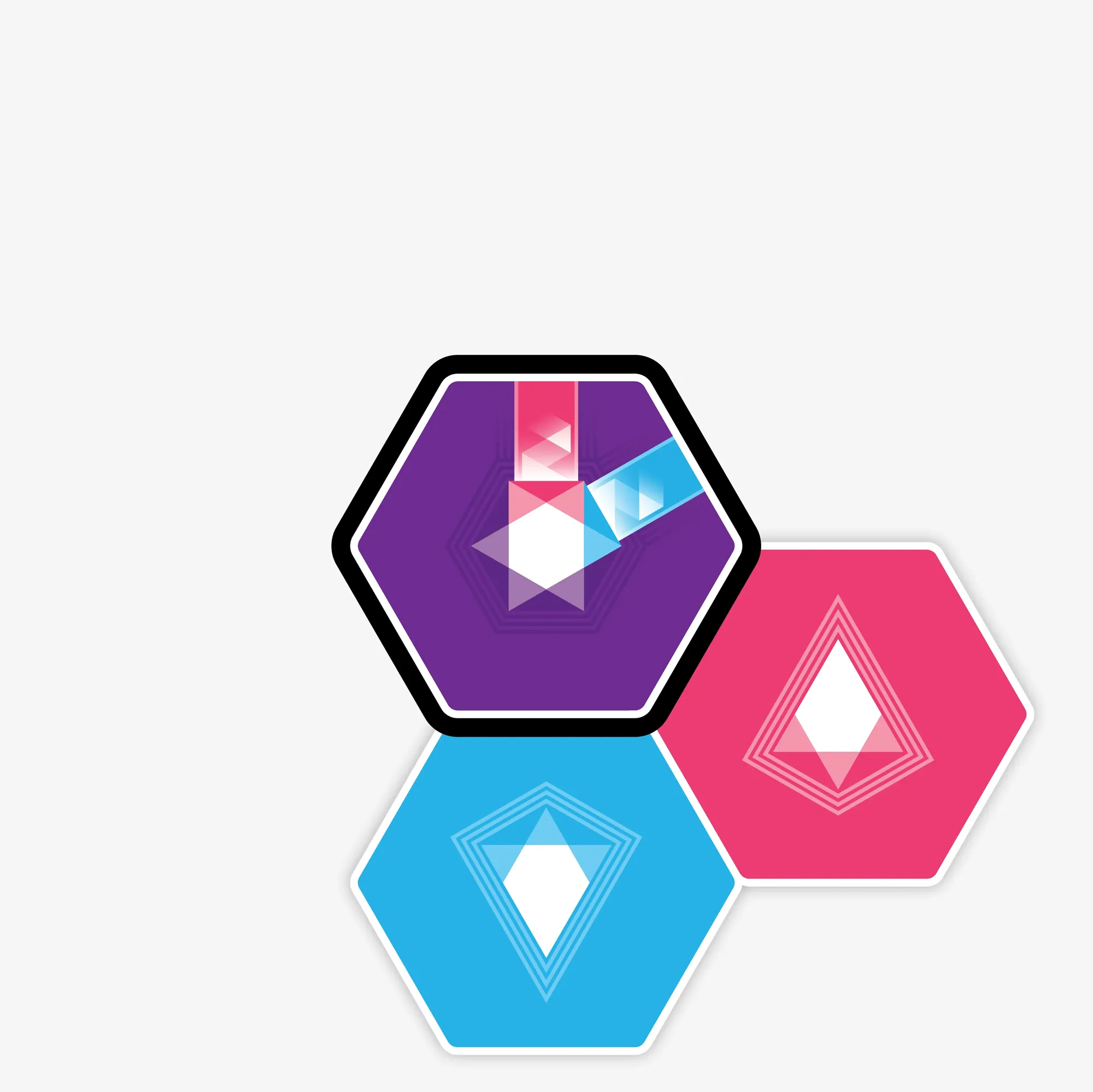
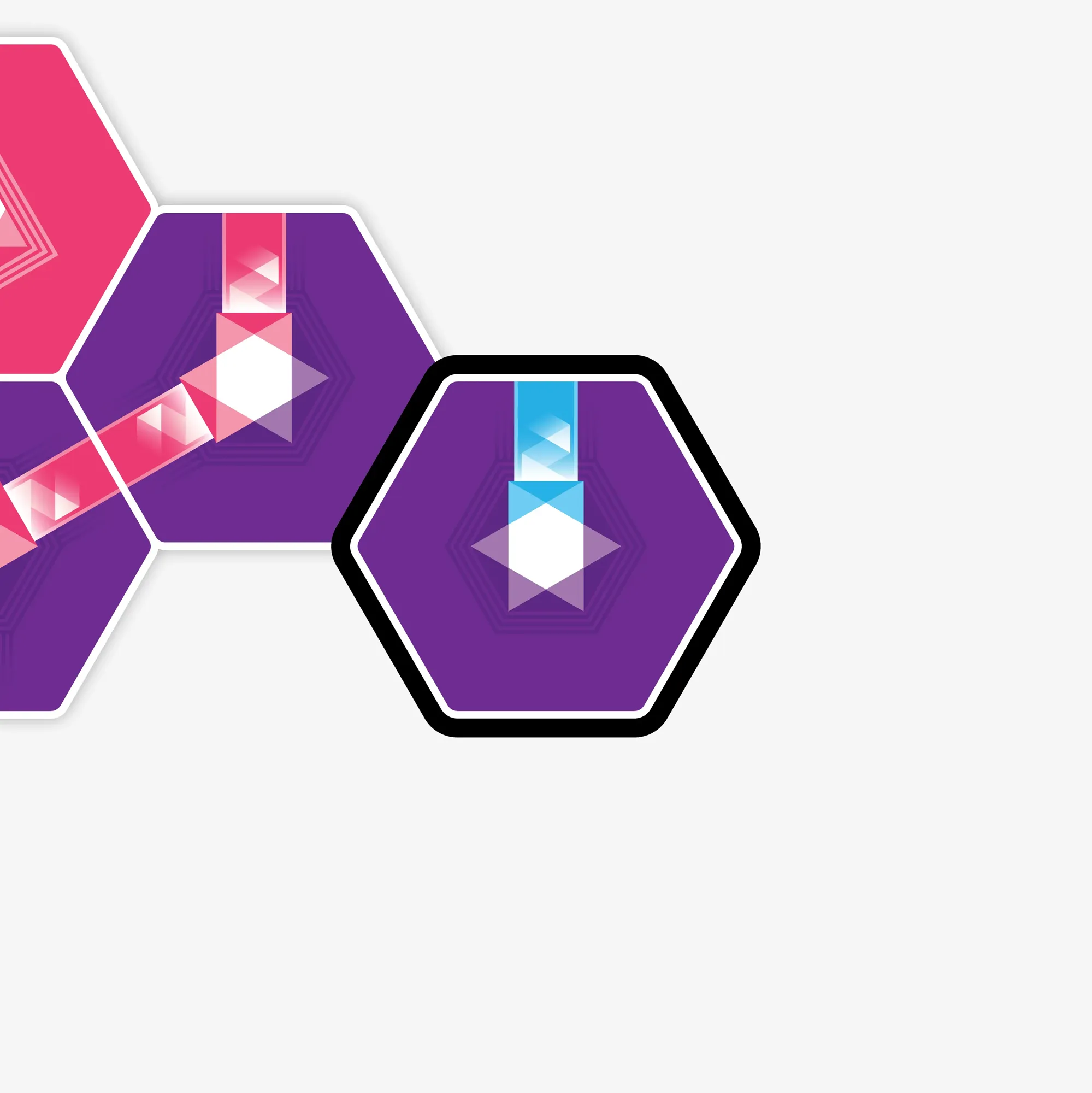

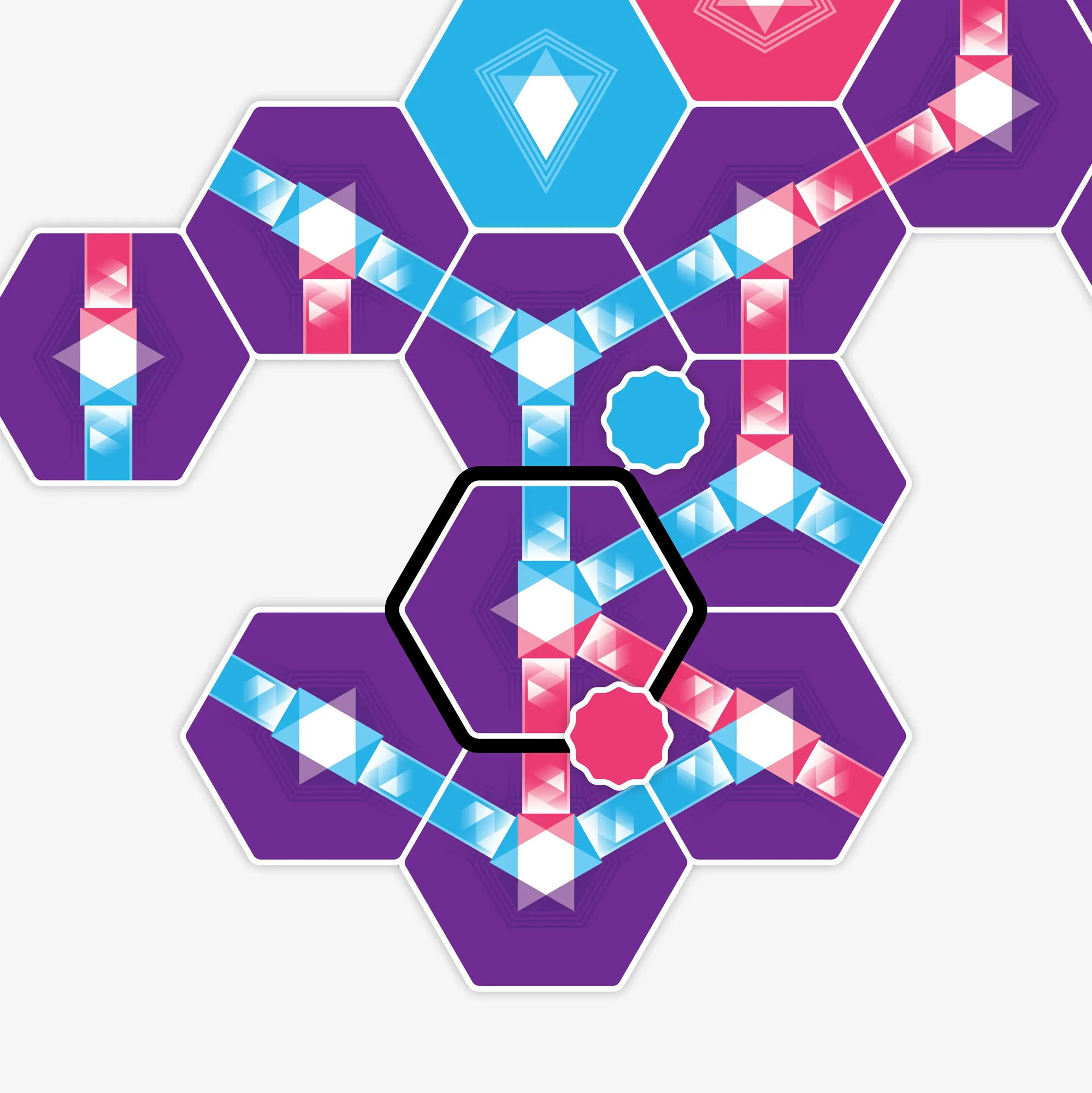
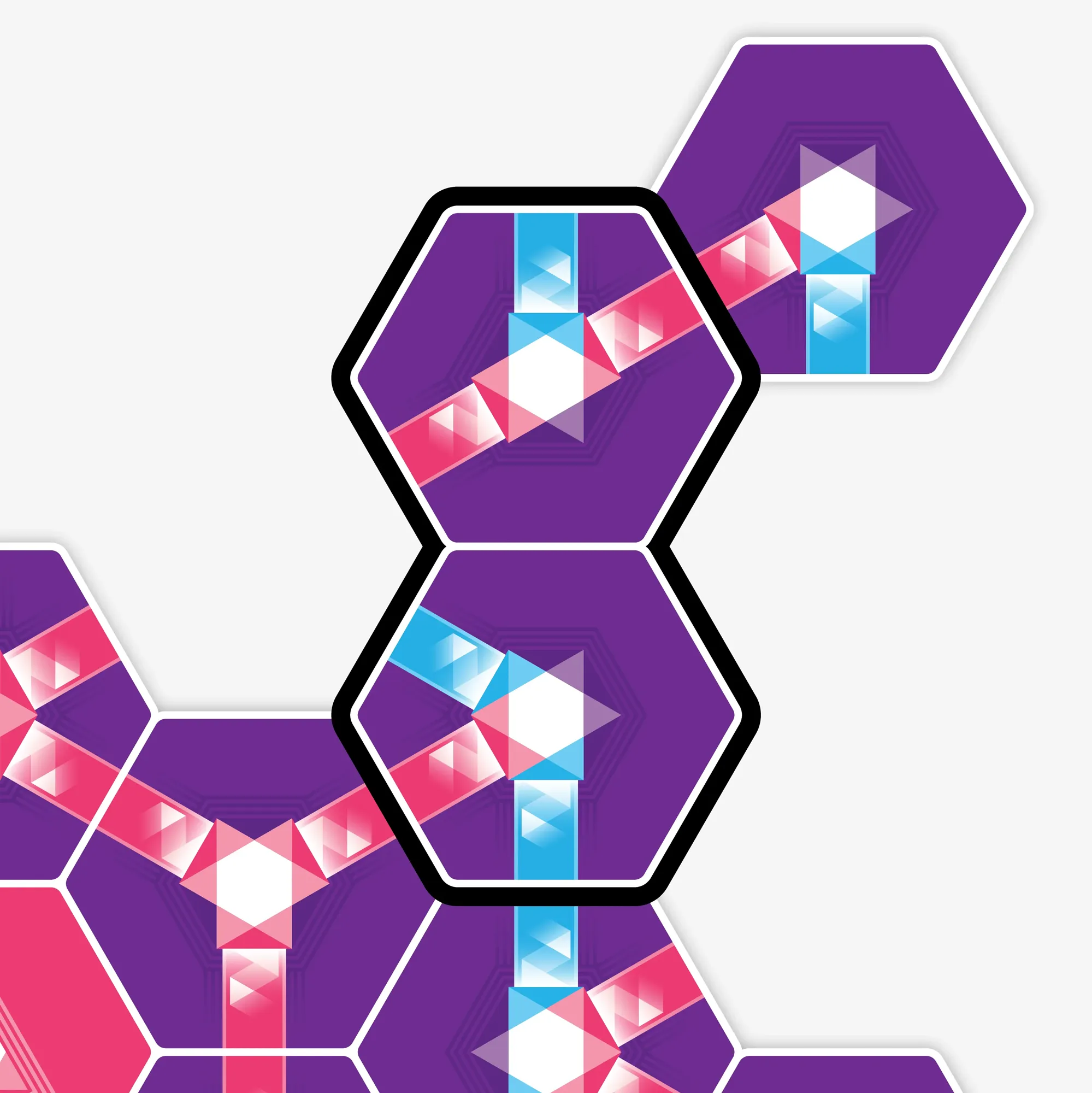
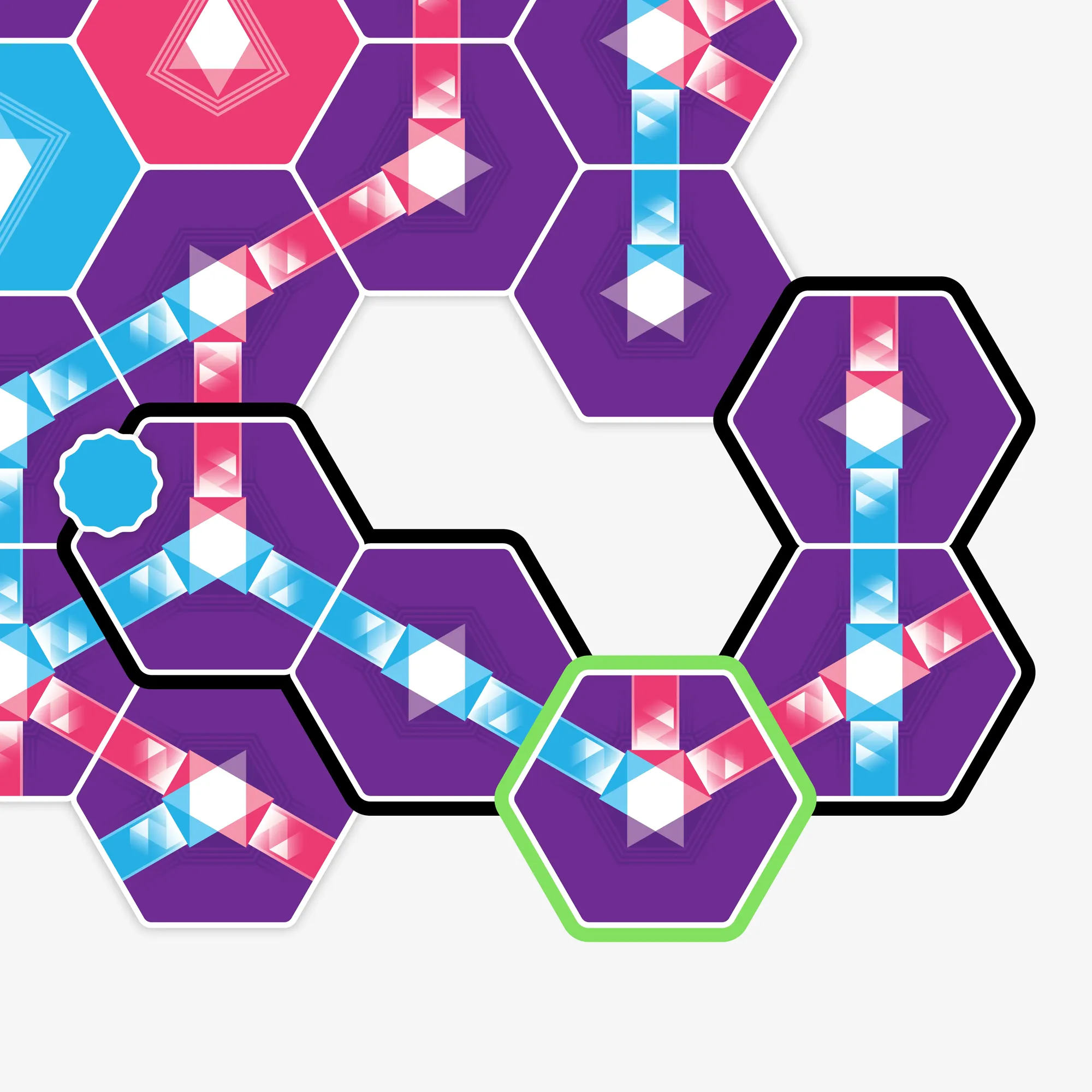
8. Creating patterns
Players may create three types of patterns:
- X pattern: two or more light beams pointing at the player along the X axis
- Y pattern: two or more light beams pointing at the player along the Y axis
- III pattern: three light beams pointing at the player in three consecutive columns
A light tile only contributes to a pattern if it is part of a path of two or more tiles. Patterns along different X or Y values are considered separate patterns. Consecutive columns are only counted once in III patterns, but multiple III patterns may be next to one another.
Only patterns that are present at the very end of the game are scoring.
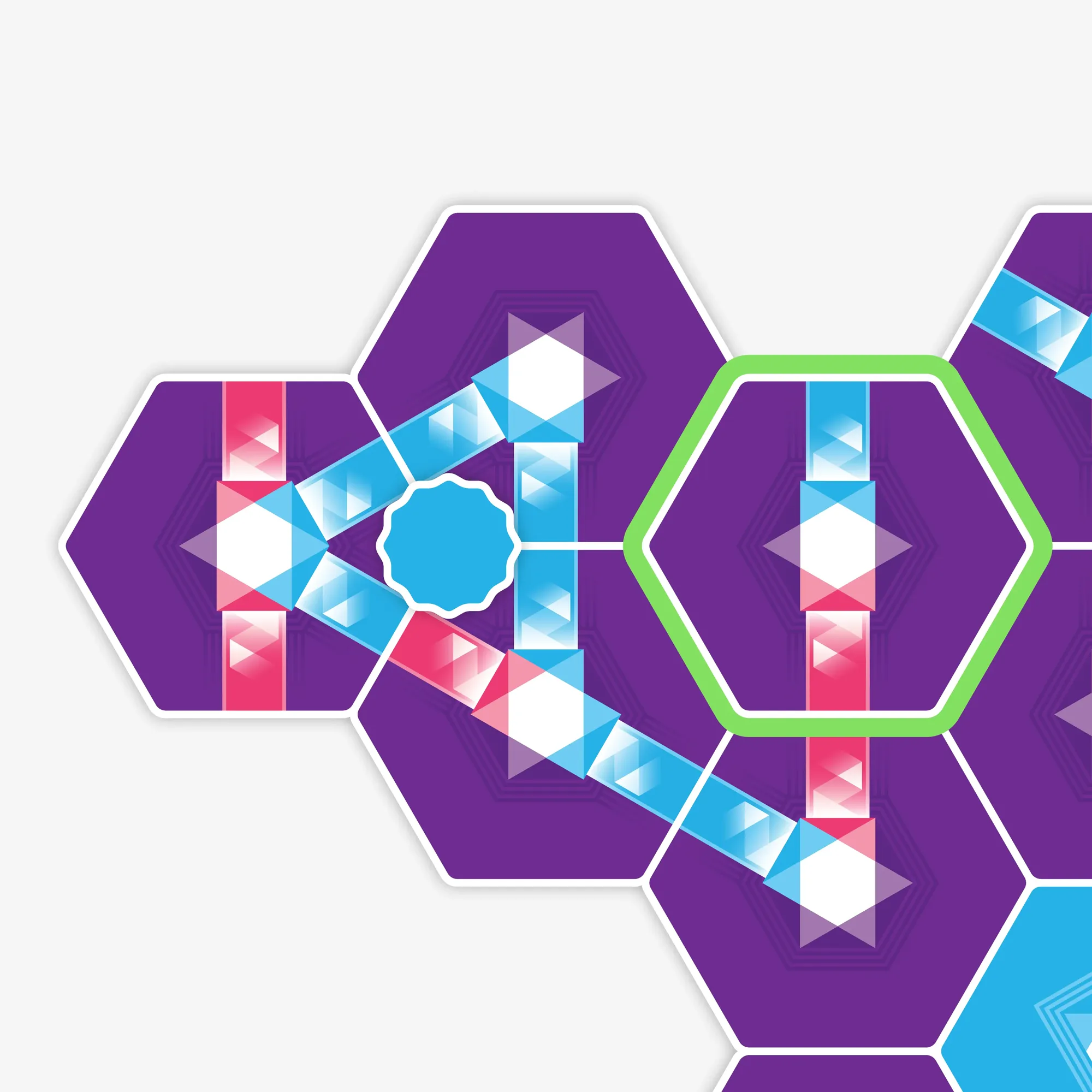

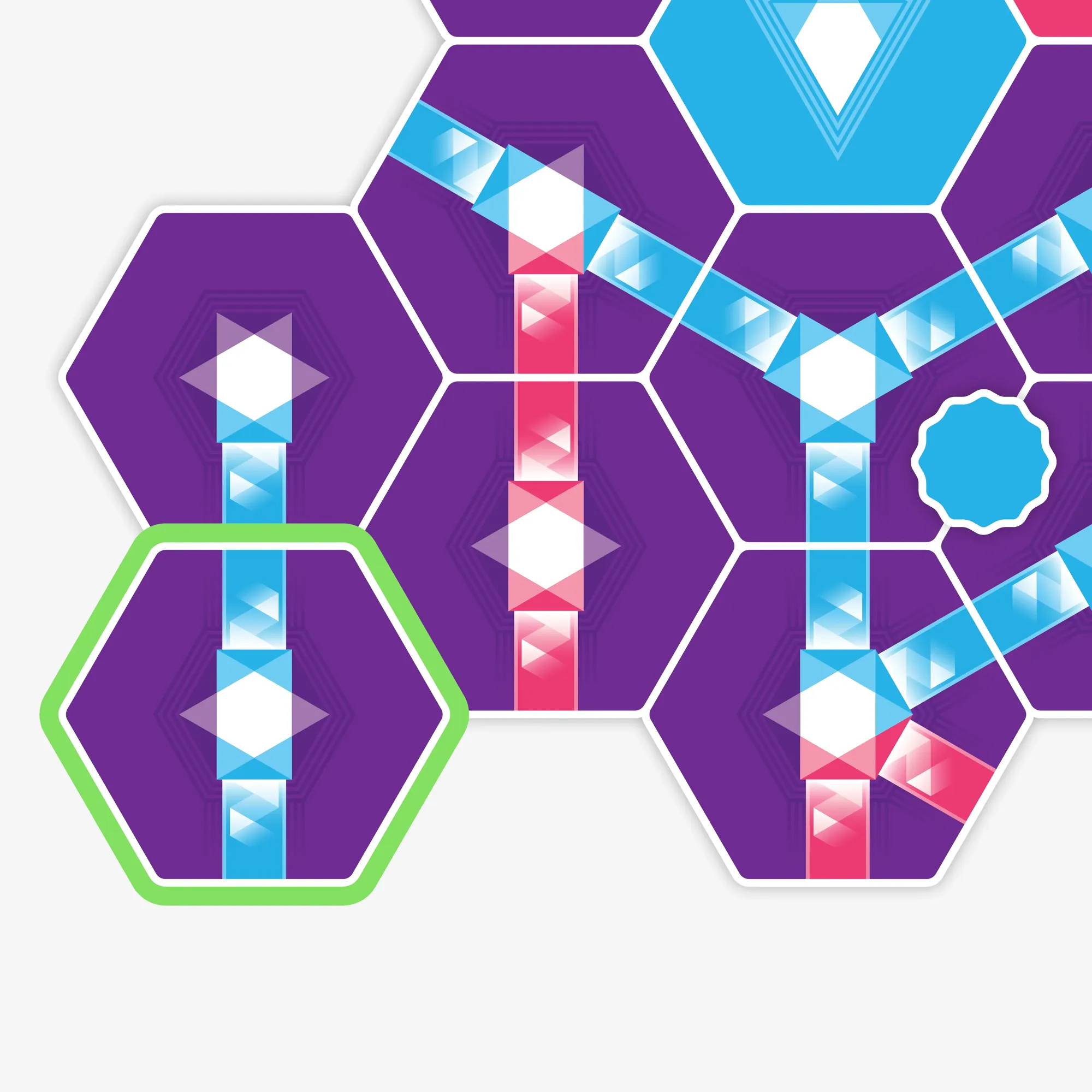
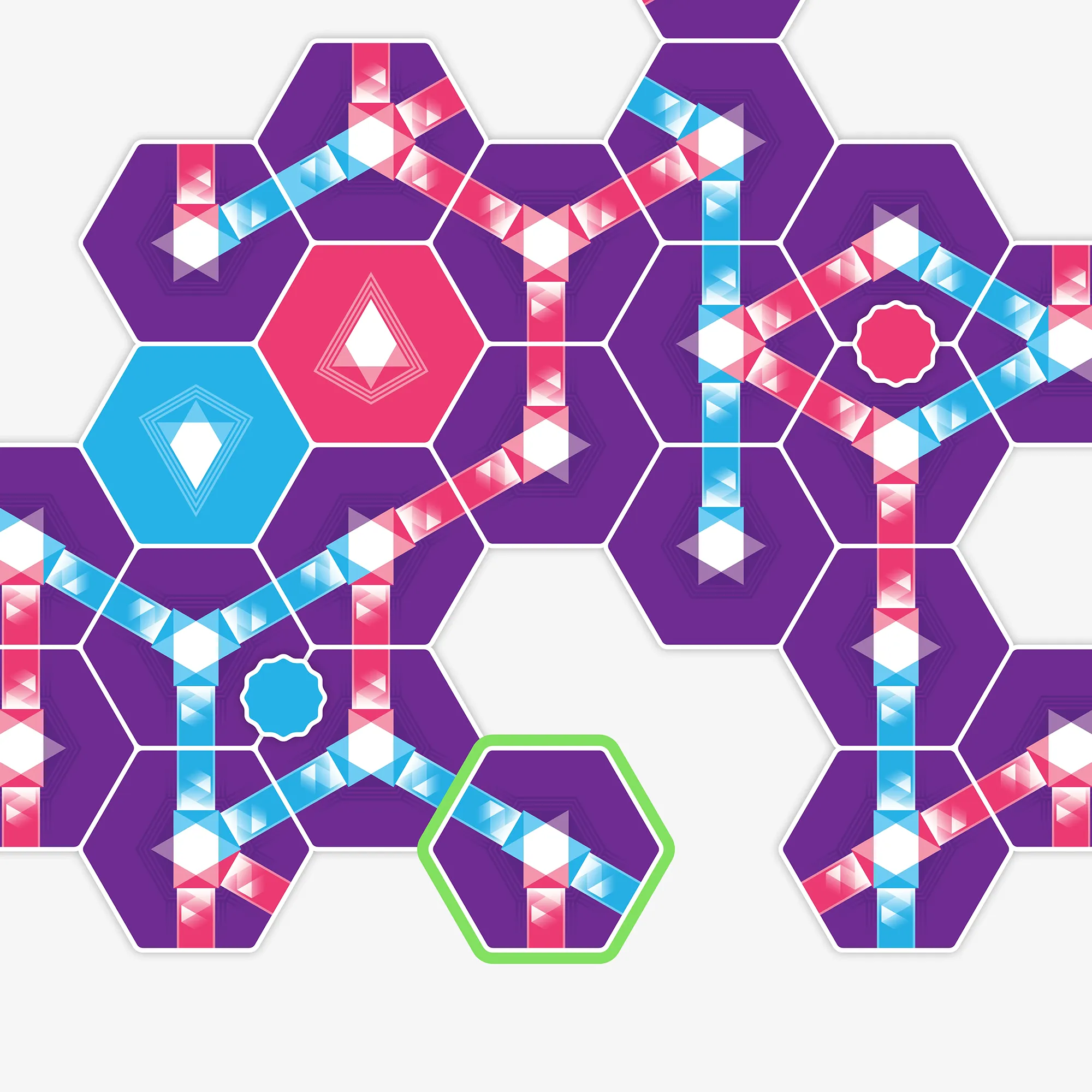
False patterns
Sometimes tiles appear to form patterns, but they do not yet fulfill the requirements.
9. Breaking paths, patterns and loops
The layout of tiles on the table is dynamic, and may be altered when players place new tiles and relocate existing ones. This often means that loops, paths and patterns will be broken during the game.
9.1 Breaking paths
A path may broken during the middle and closing turns by any player. It is possible to break and then restore a path within the same turn.
9.2 Breaking patterns
Patterns are fragile, and may be broken during the middle and closing turns by any player. It is possible to break and then restore a pattern within the same turn.
9.3 Breaking loops
A loop may be broken when a player relocates a tile that forms part of it. When this happens, the loop marker inside of it is returned to its player.
Loops may only be broken during the middle turns, but by any player. It is possible to break and then restore a loop within the same turn.
However, a loop consisting of six or more tiles may never be broken, and if the loop contains empty spaces, those spaces may never be filled. When a loop of six or more tiles is created, only those that make up the smallest new loop shape are considered to be part of the new loop. Other tiles that make up adjacent loops are not included.
Players may no longer break any loops, including their own, once the closing turns have begun.
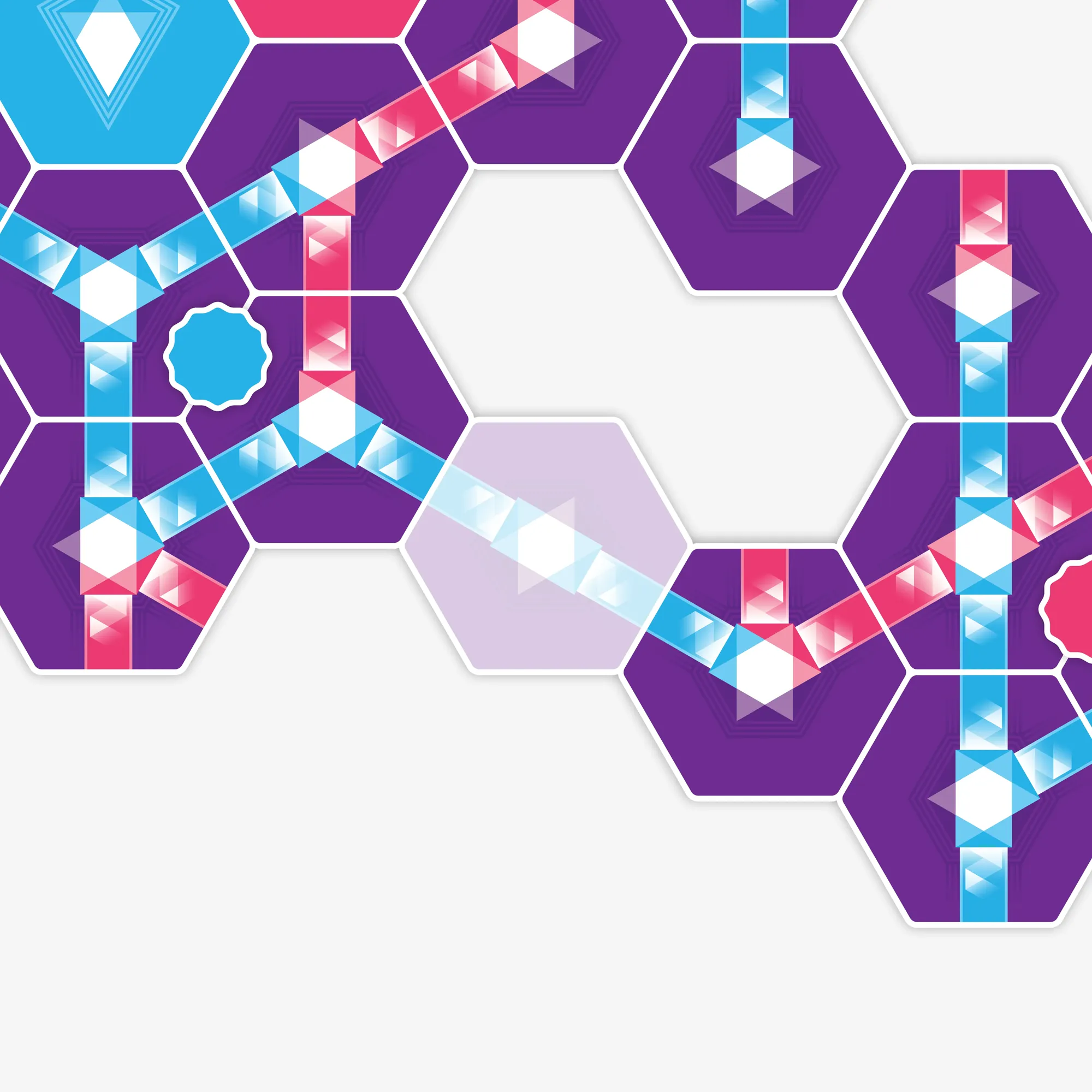

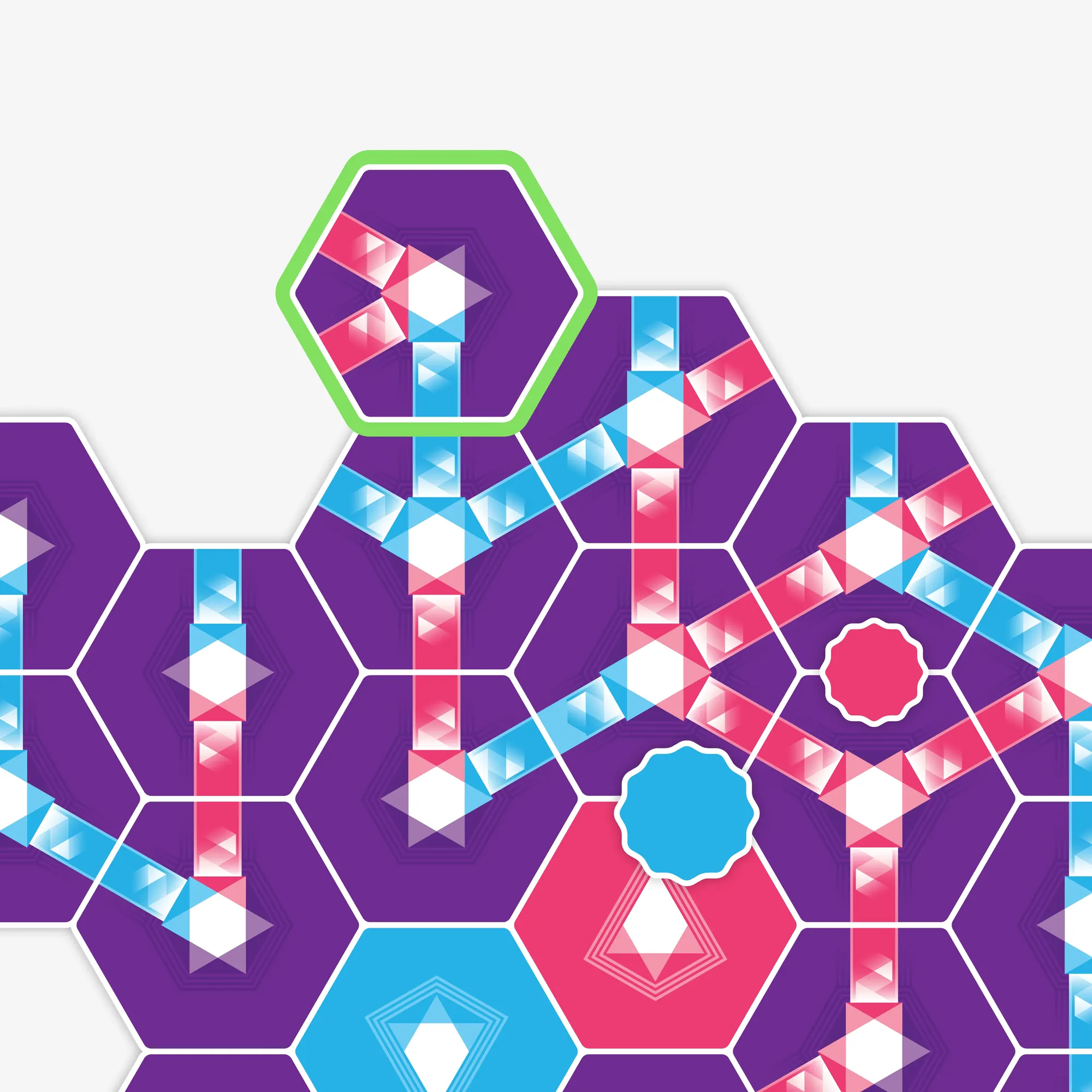
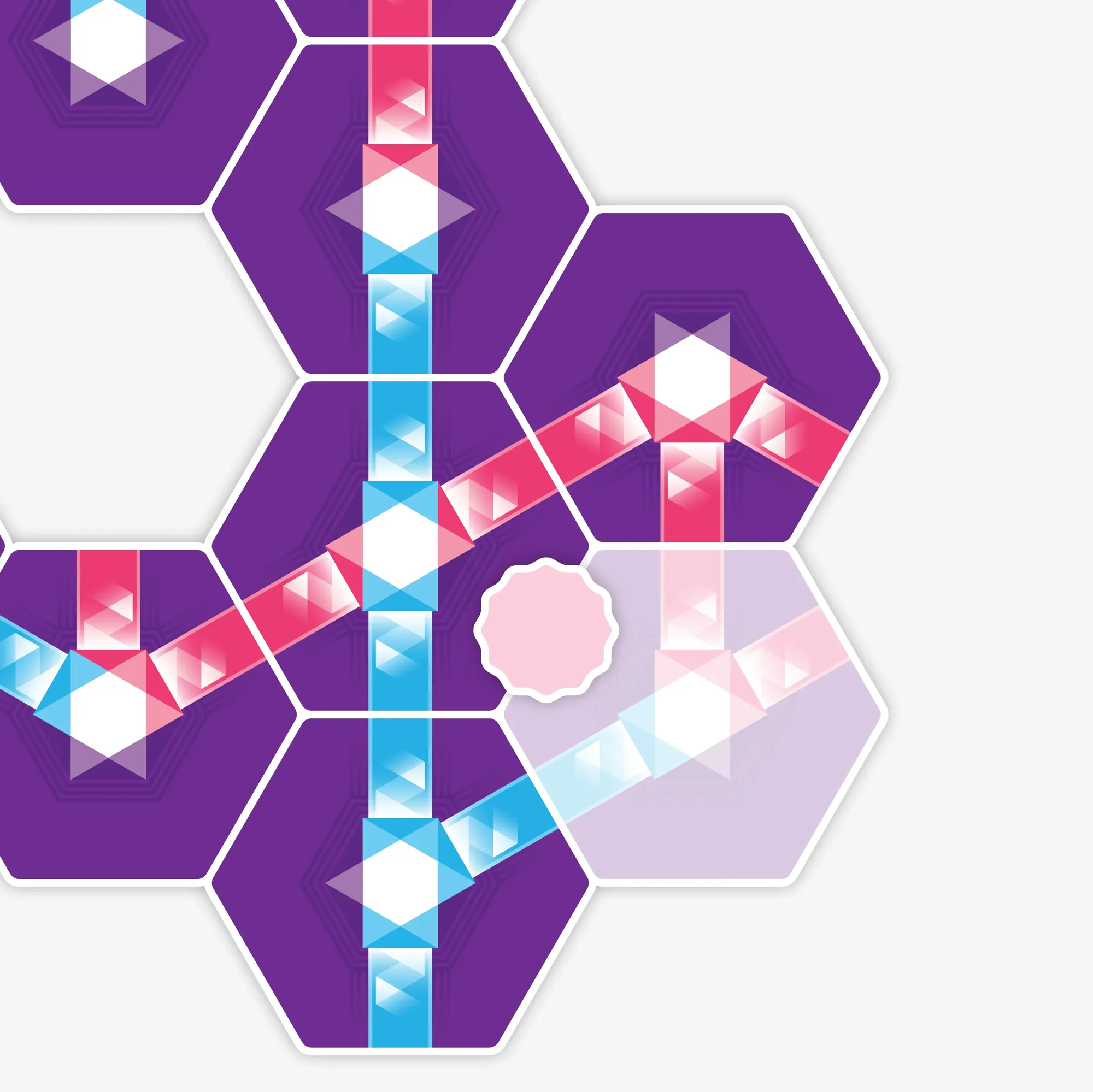
10. Scoring
Players’ scores are calculated based on a count of the light beams, patterns and scoring loops a player has accumulated at the end of the game.
10.1 Light beams
A light beam that points in a player’s direction and is part of a path of two or more tiles is worth one point. Only light beams that sit at the edge of the field of play are counted.
10.2 Patterns
Each X, Y, and III pattern is worth one point. However, X and Y patterns that contain one or more additional light beams earn an additional point for each added light beam. Also, although III patterns cannot be extended, it is possible for two or more III patterns to sit adjacent to one another. Each of these completed III patterns is worth one point.
10.3 Loops
Loops are divided into three groups, and are scored as follows:
- Five or fewer tiles: 1 point
- Six or more tiles (without empty spaces): two points
- Six or more tiles (with empty spaces): one point + one point for each empty space where a tile could fit
In order for a loop to be scoring it must connect, directly or indirectly, to at least one light beam pointing in the player’s direction.
10.4 Tiebreakers
A game of Prisma may end in a tie. However, if a winner must be determined in a tournament match, use these tiebreakers:
- The most scoring loops
- The largest single scoring loop
- The player with the most tiles included in scoring loops
In round-robbin matches a win is worth three points and a tie is worth one point.

